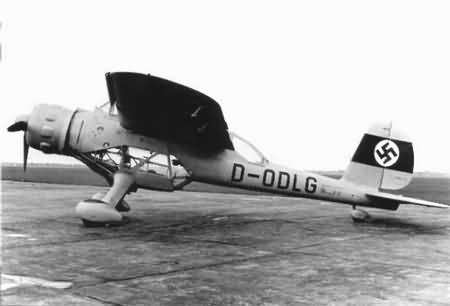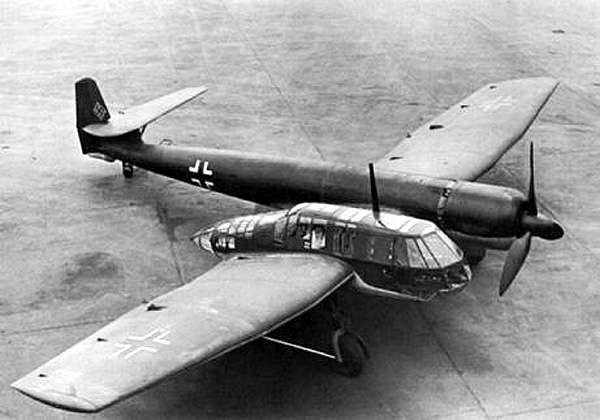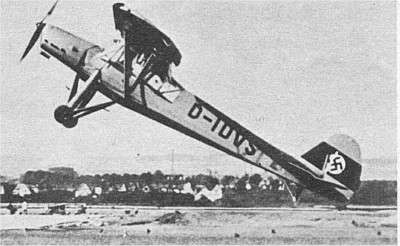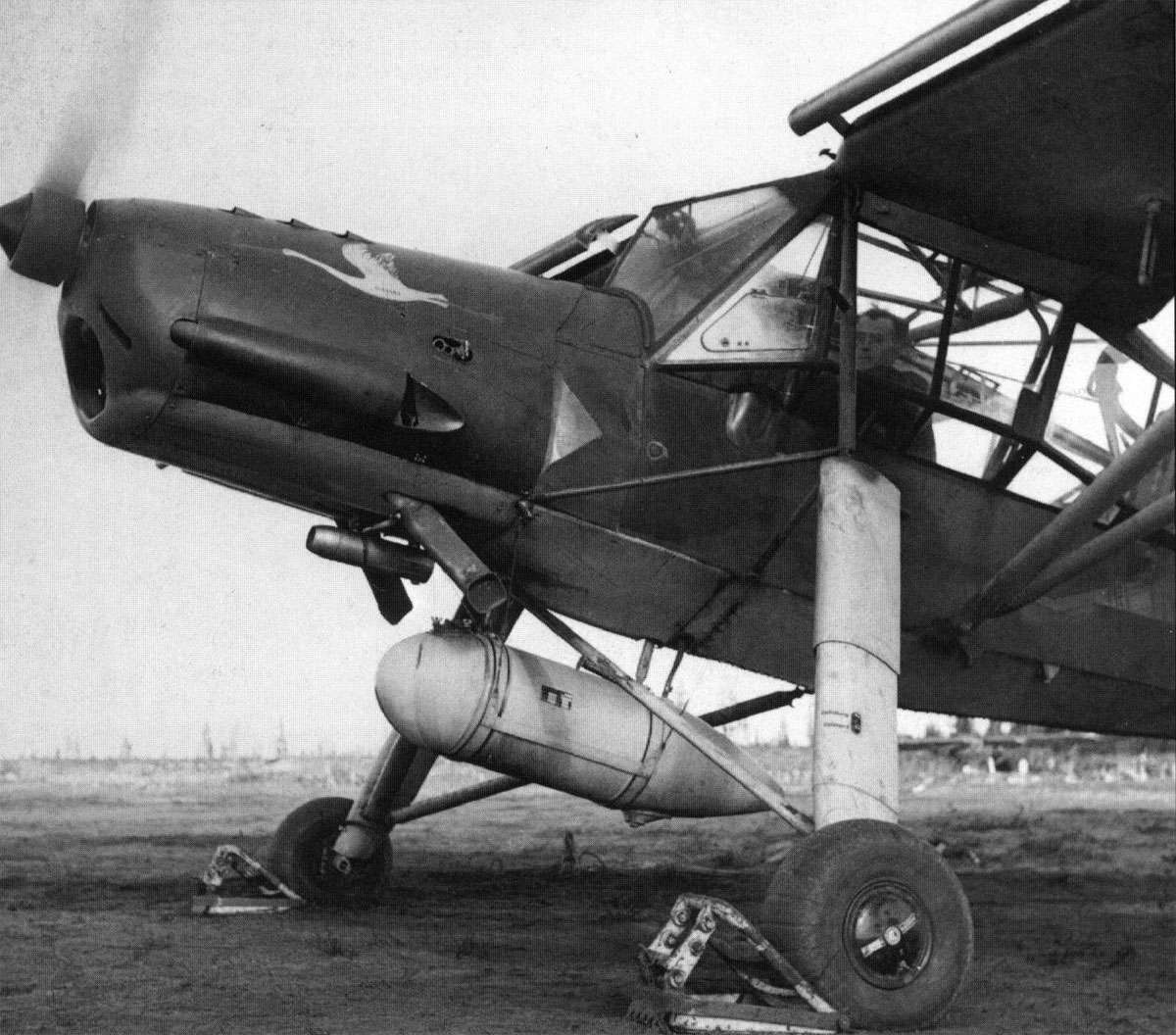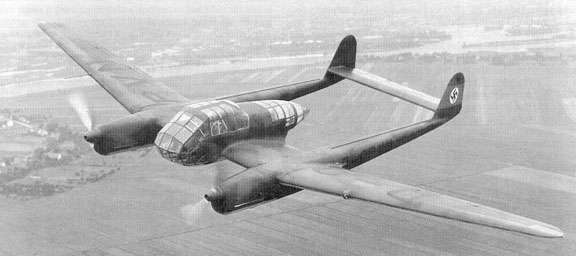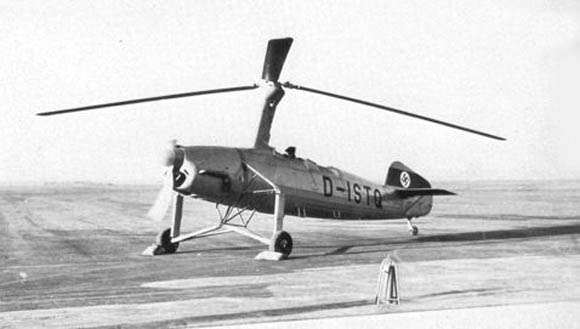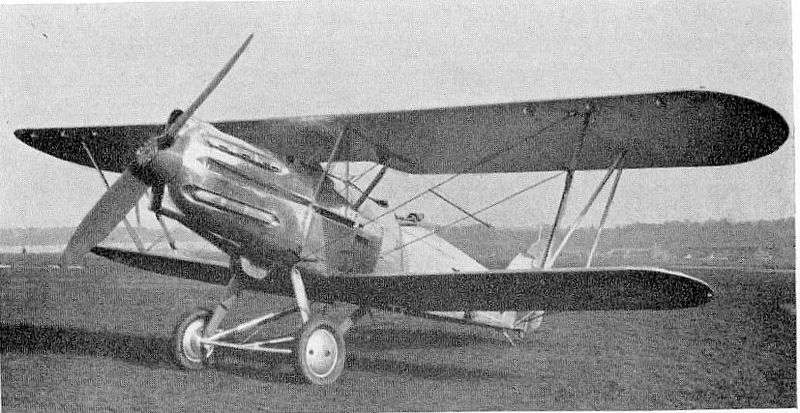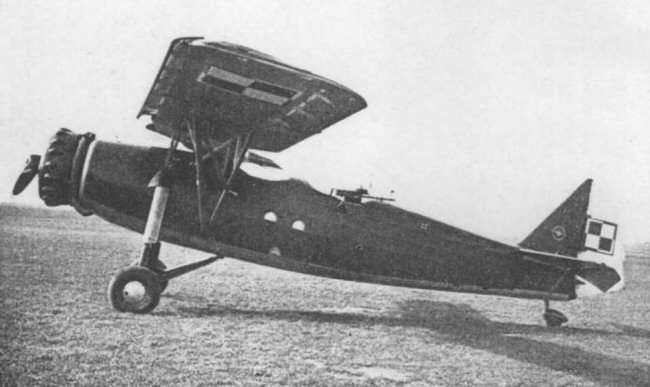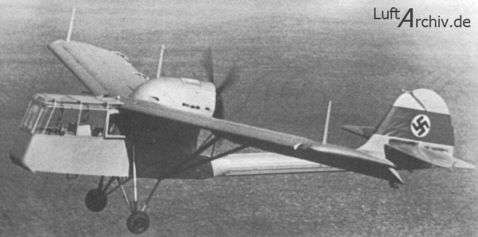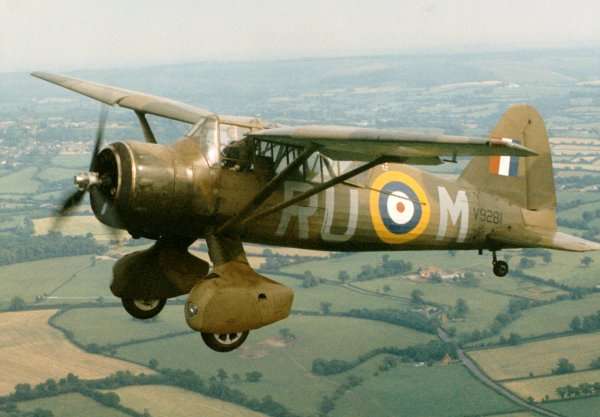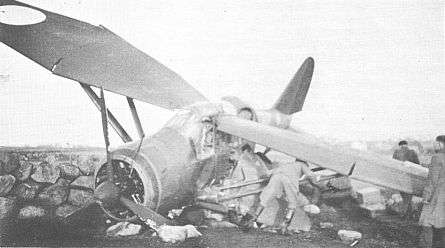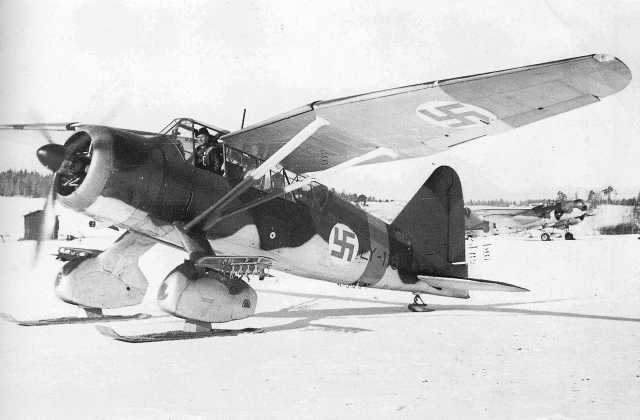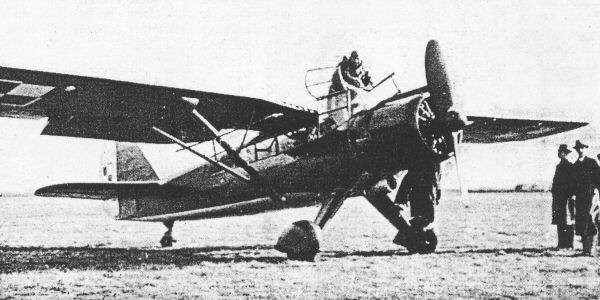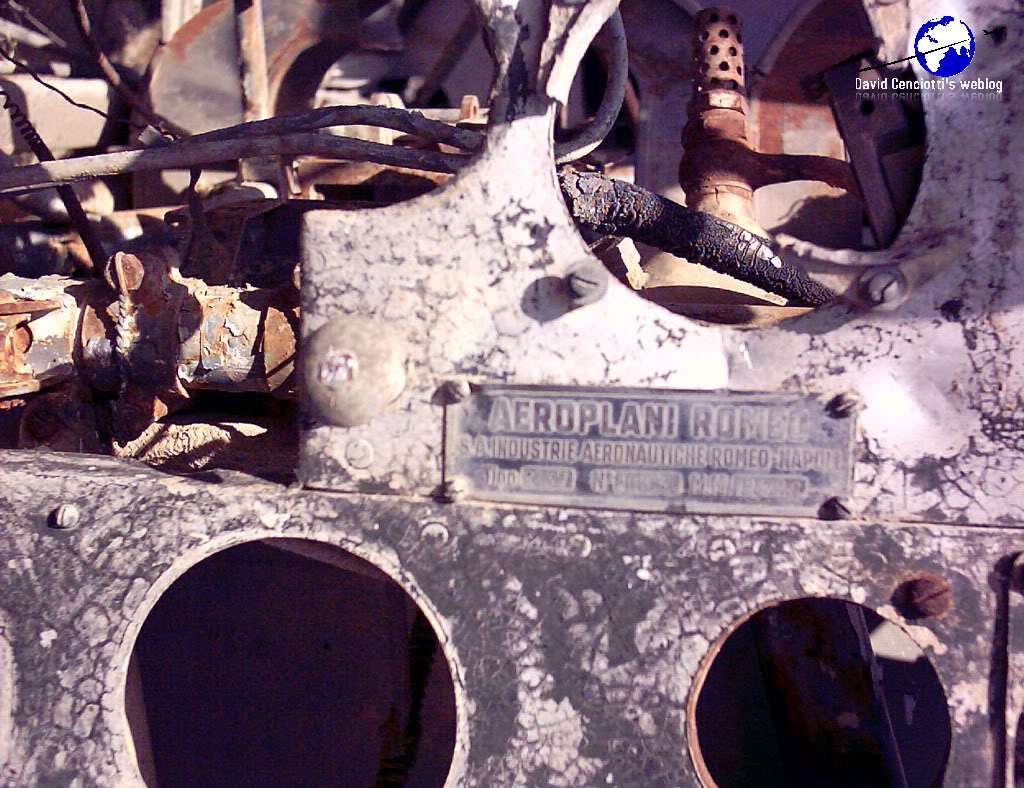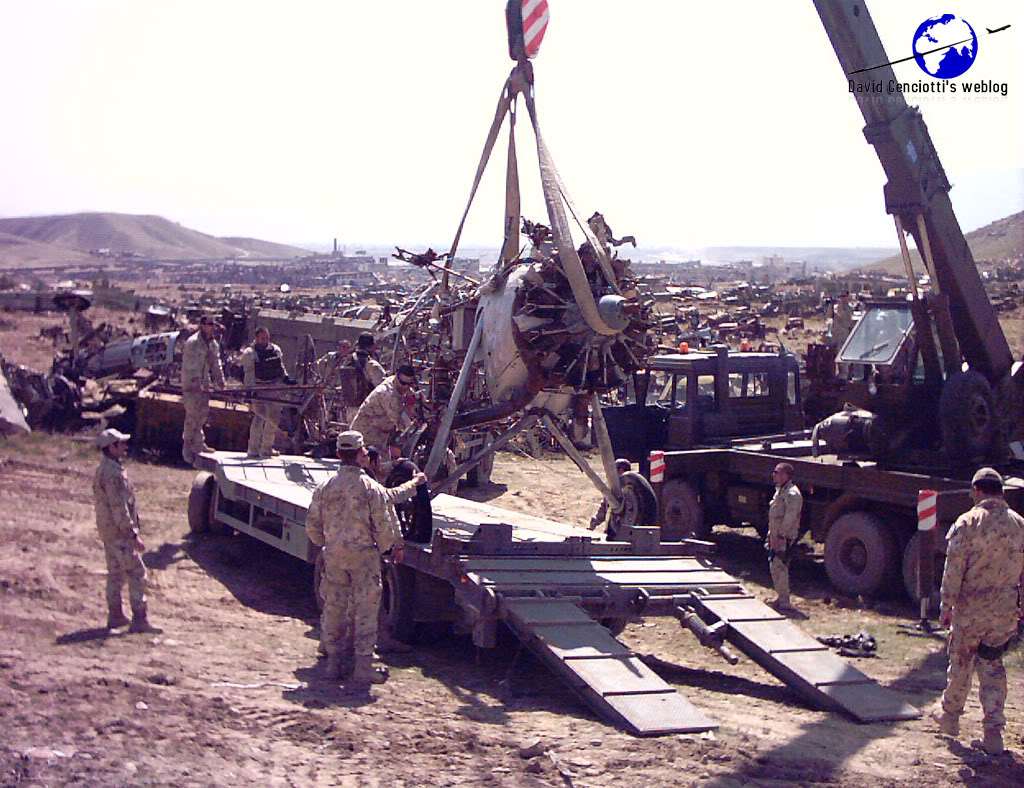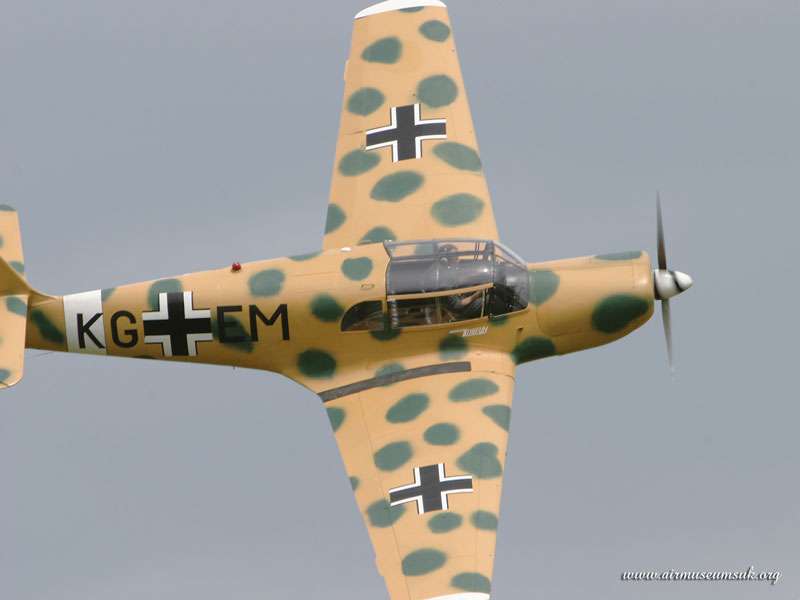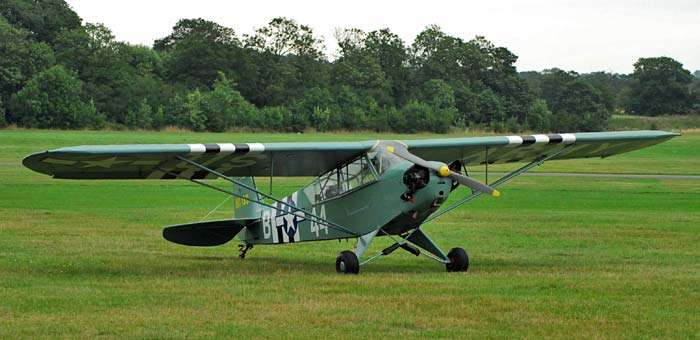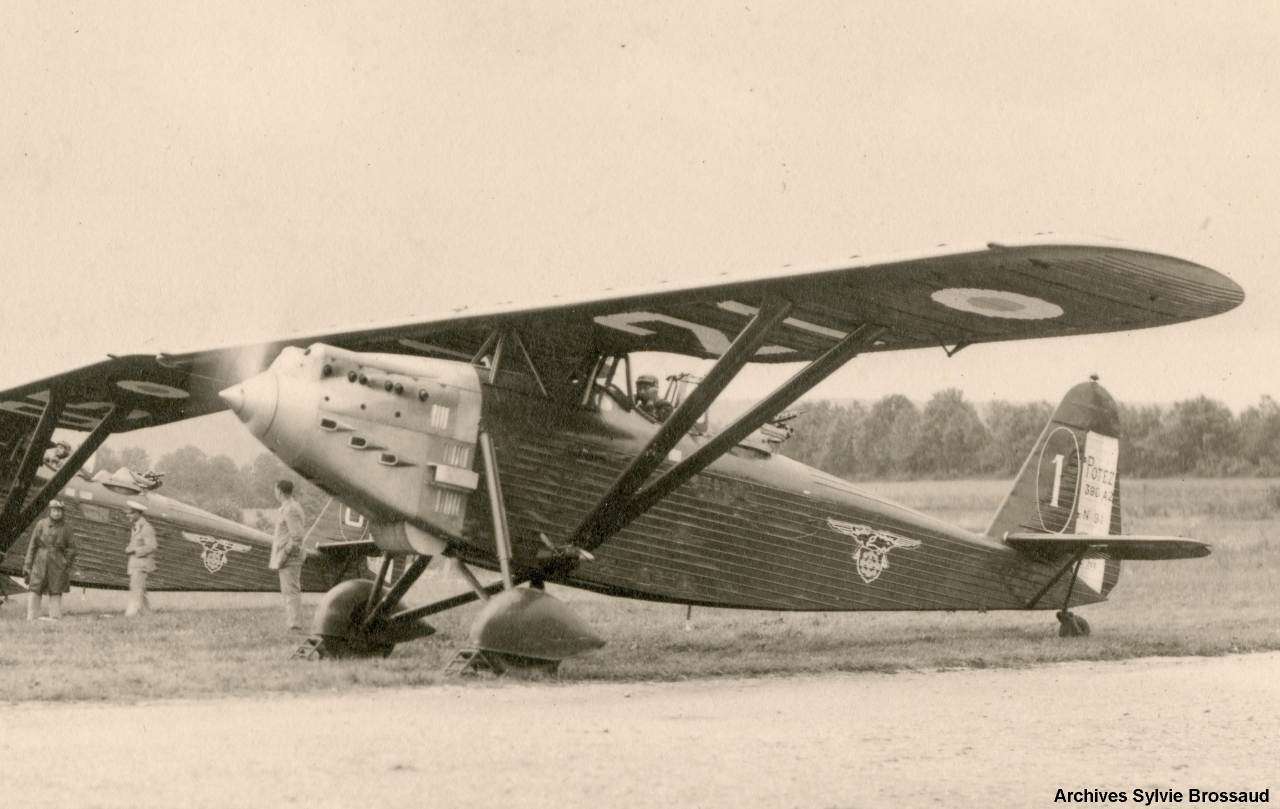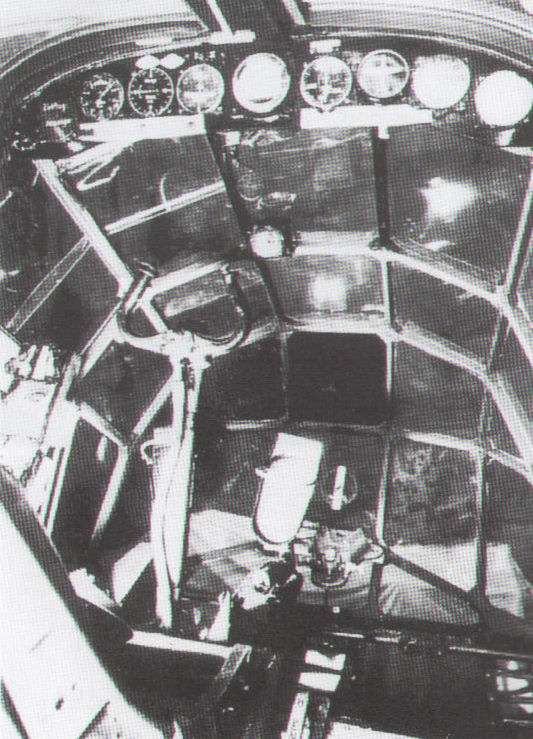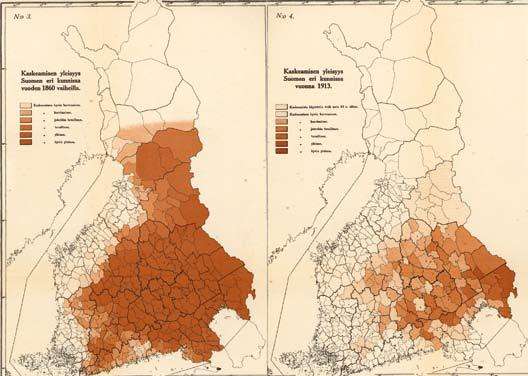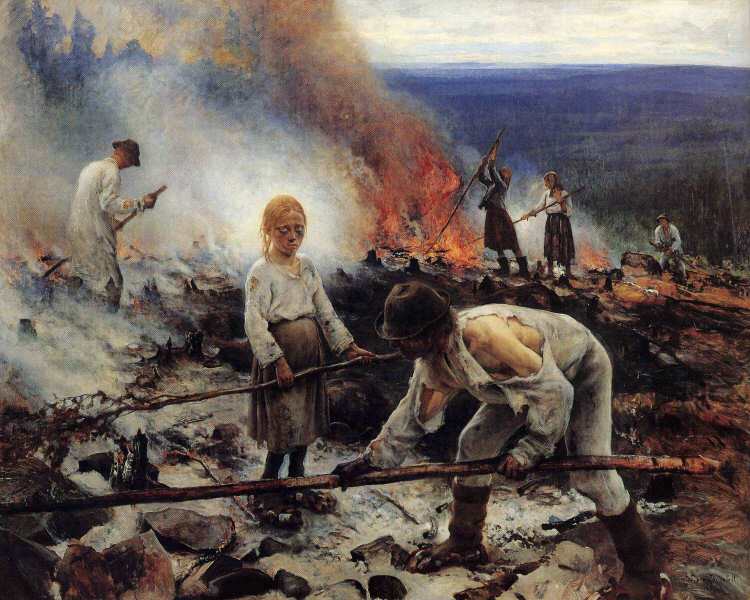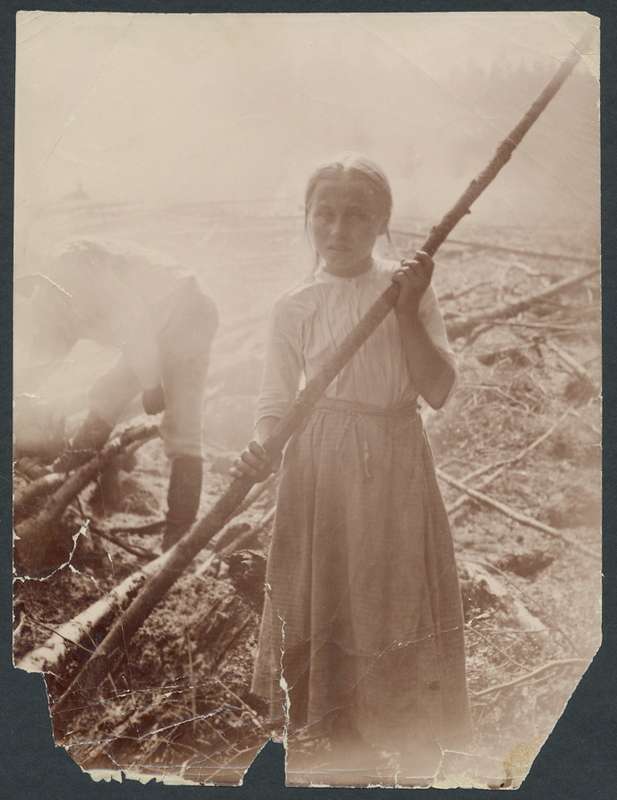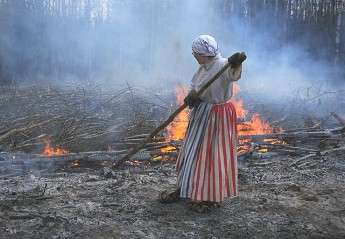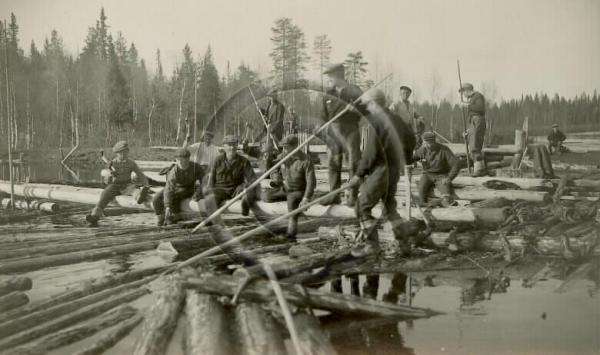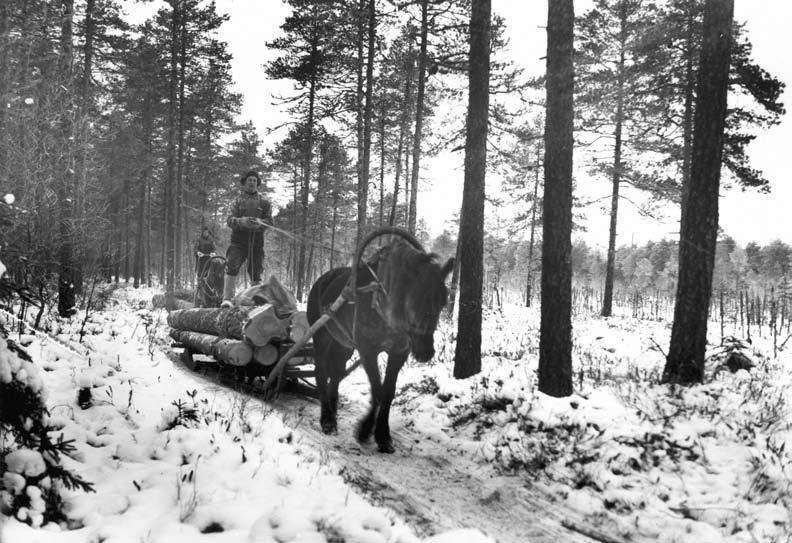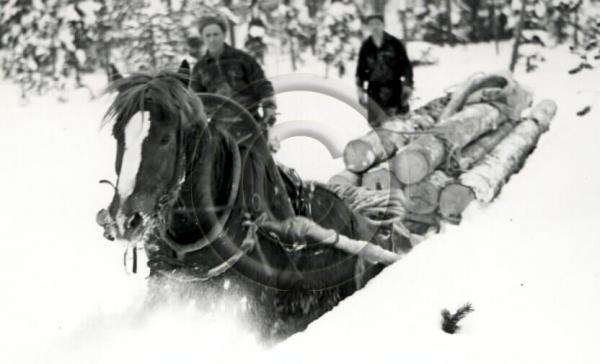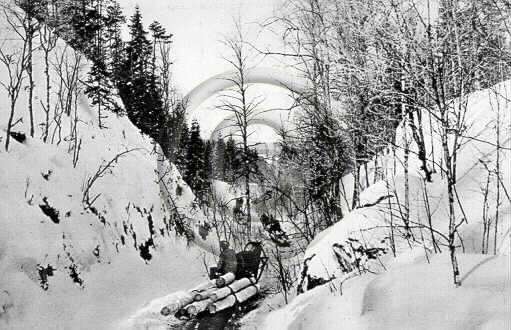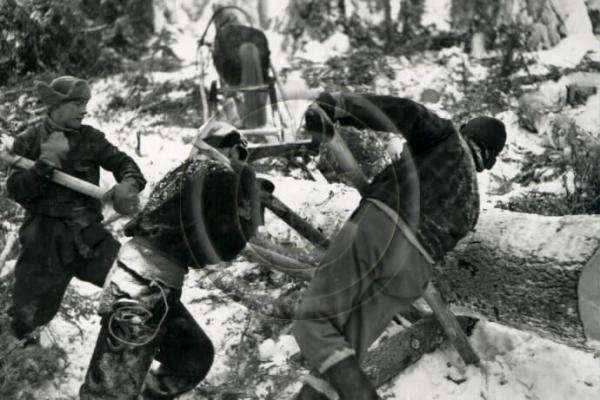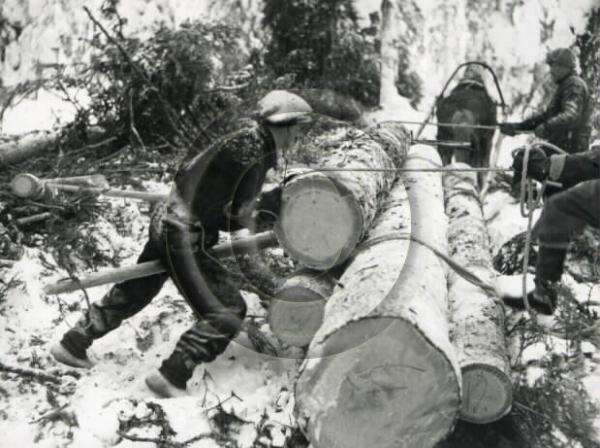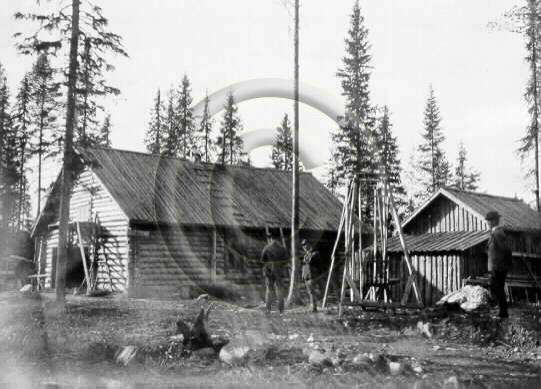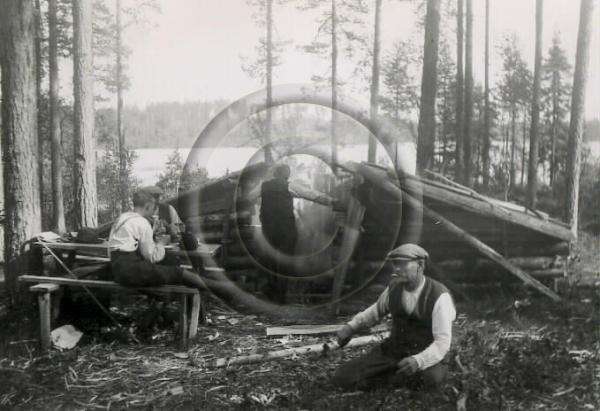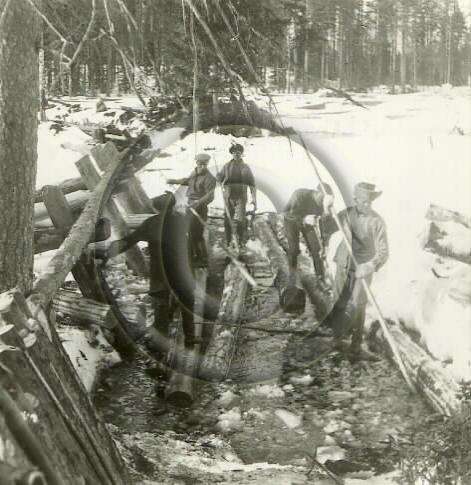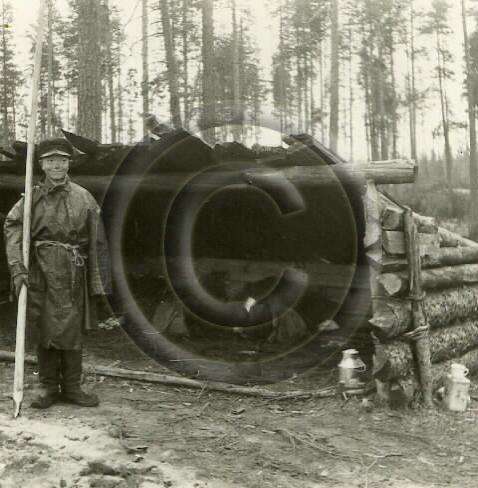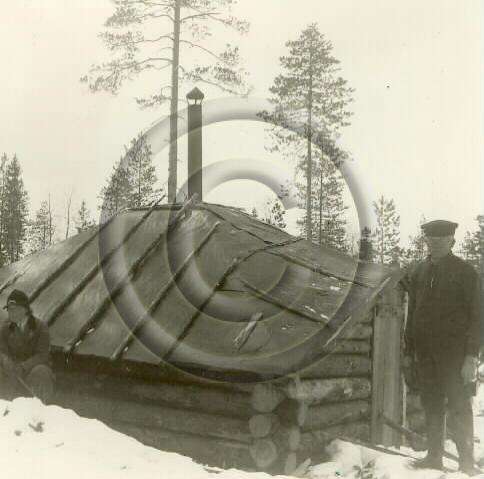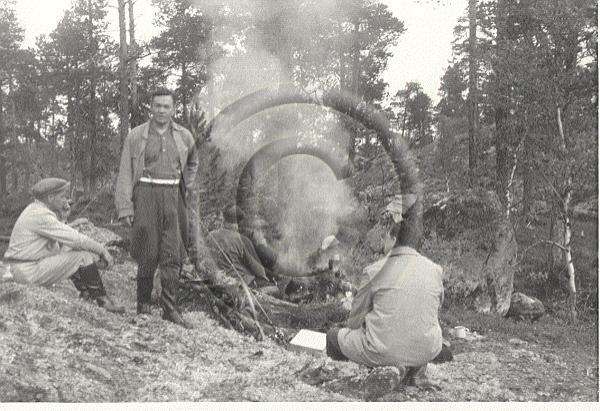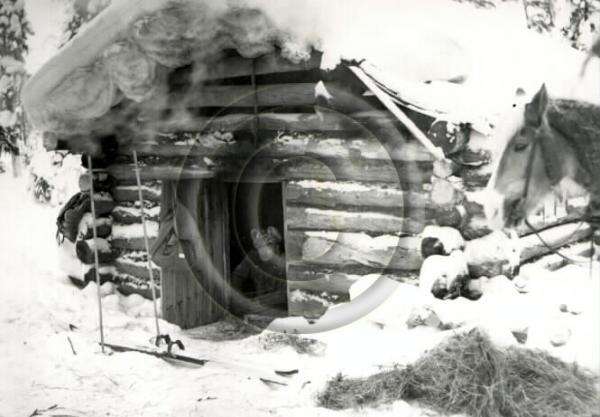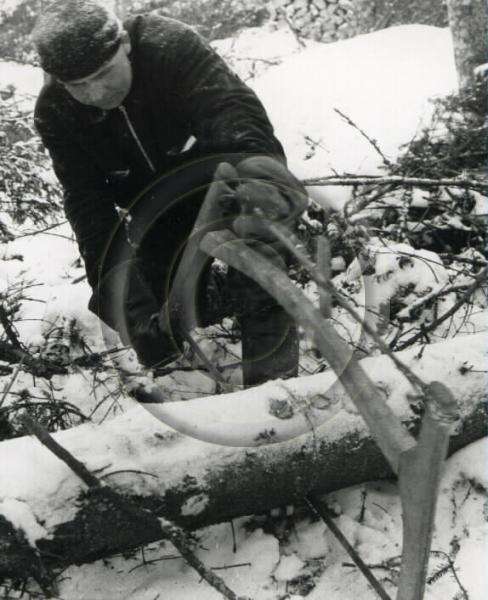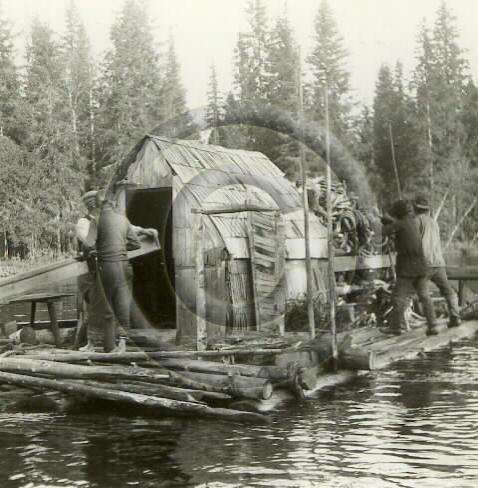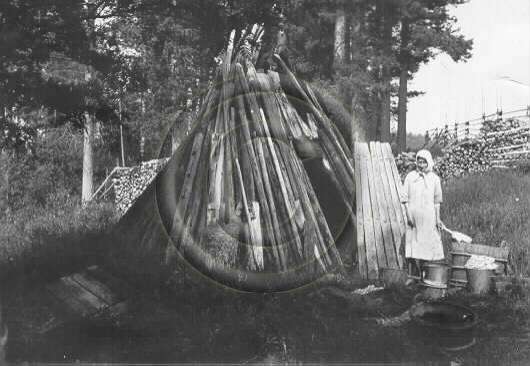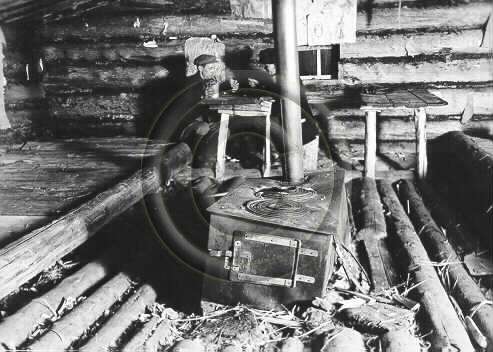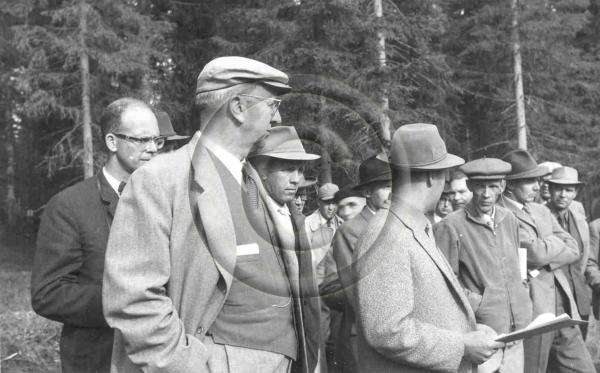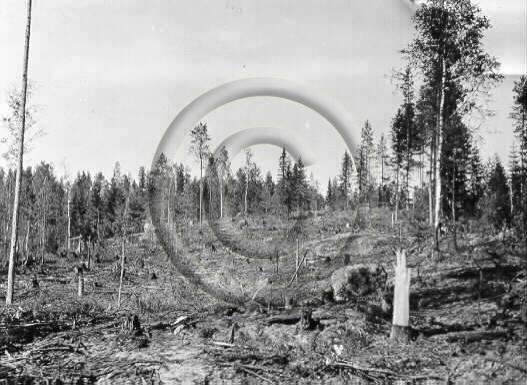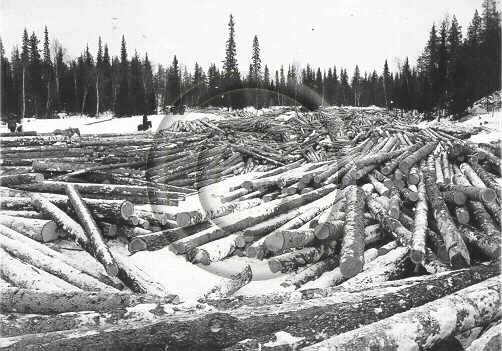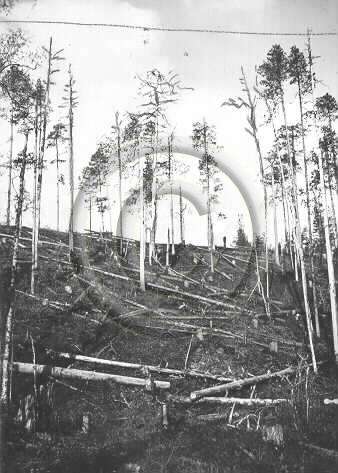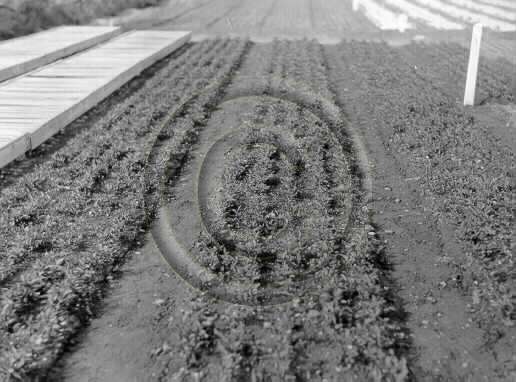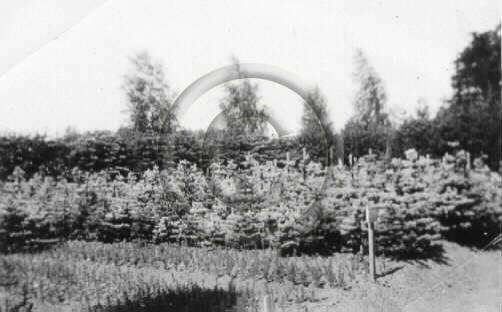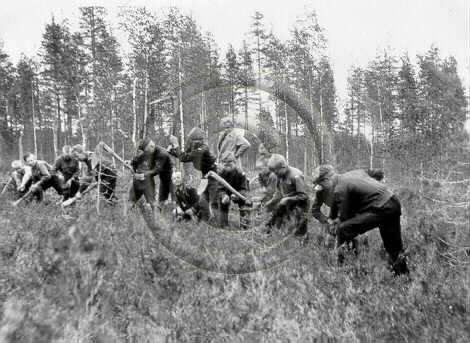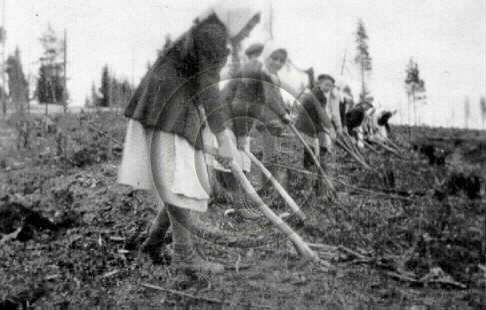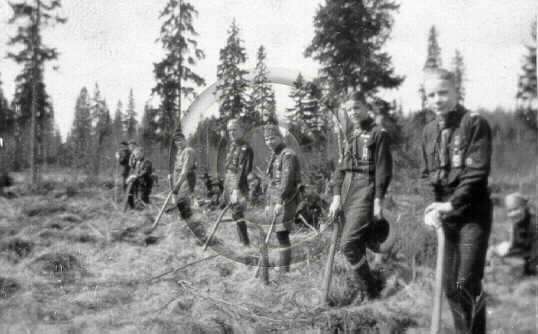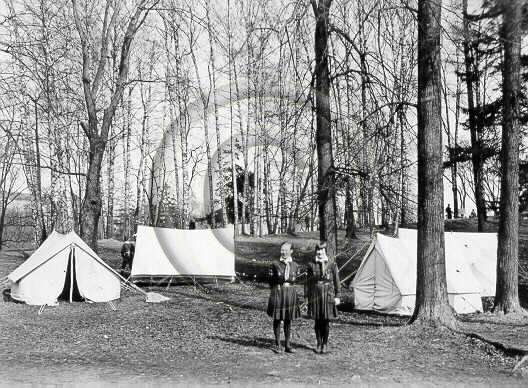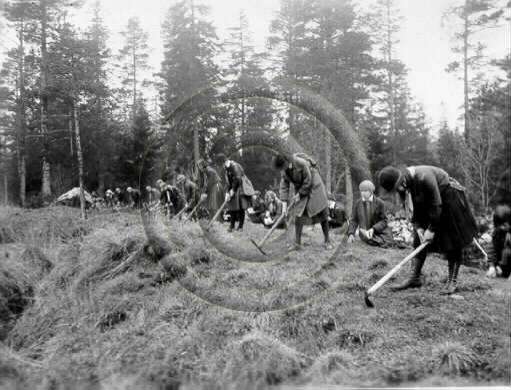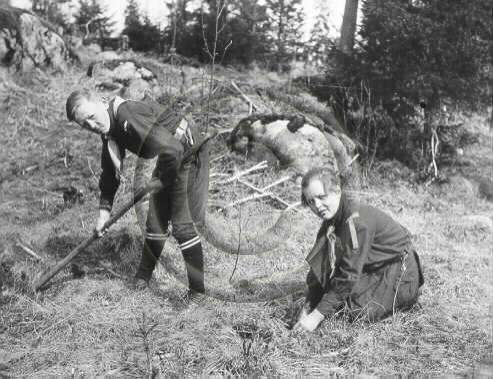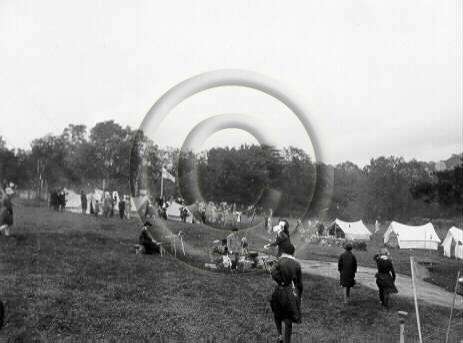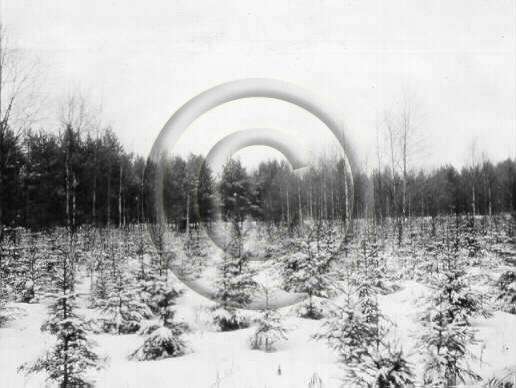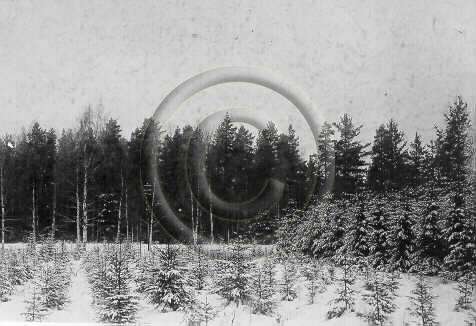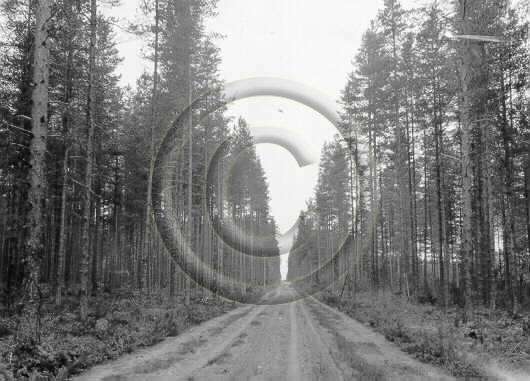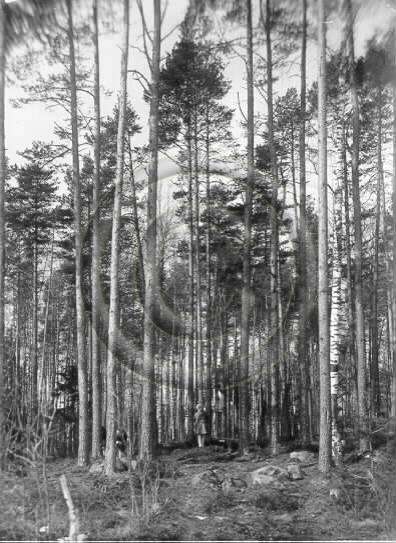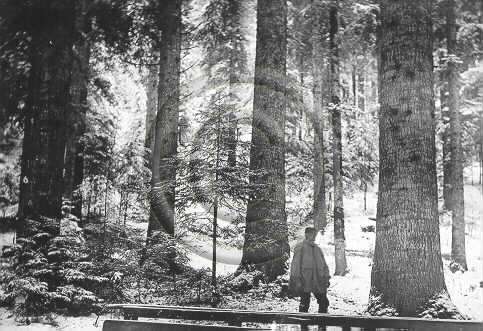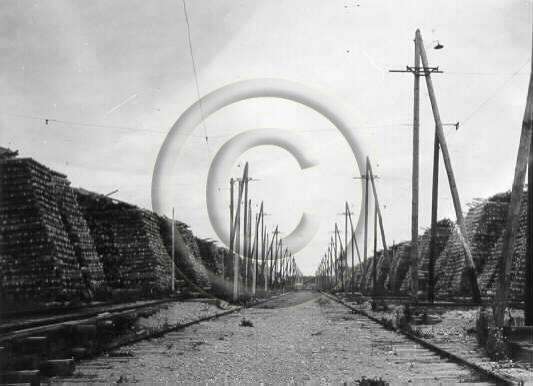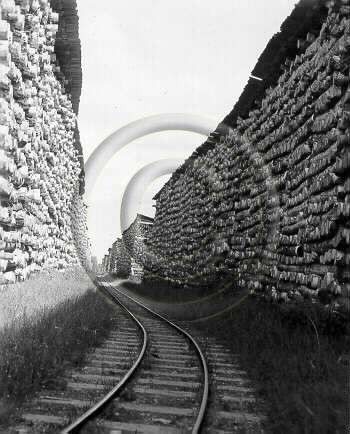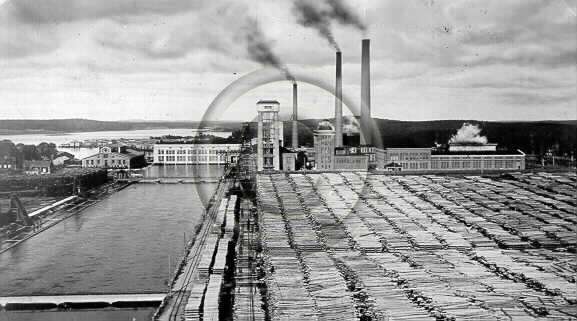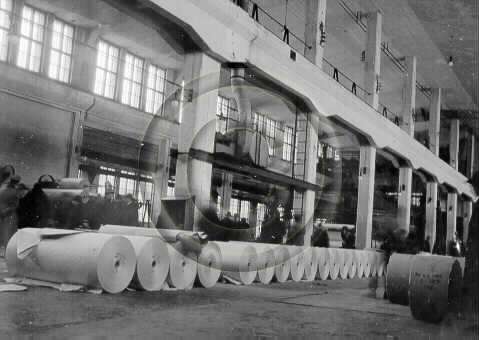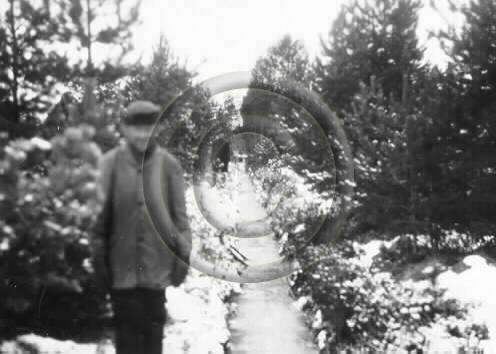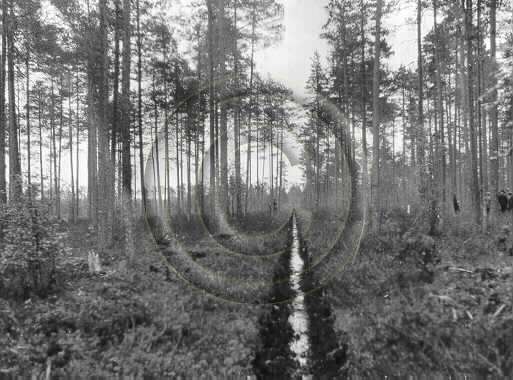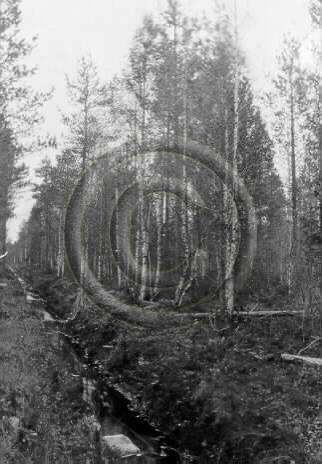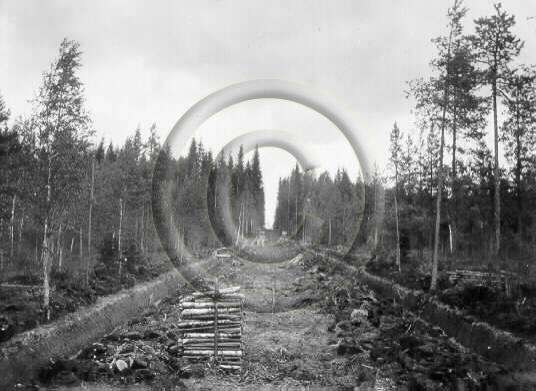Observation Aircraft for the Ilmavoimat - 1938 - continued
Heinkel He 46 (Germany)
During the early 1930s, the German military was beginning to build up in strength - the RLM (German Air Ministry) wanted aircraft that could be rapidly built and would be able to swell the Luftwaffe's inventory with large numbers of aircraft for training. Ernst Heinkel designed many of these early aircraft, with the He 46 being created to fill this short-range reconnaissance and army co-operation role for the Luftwaffe. The Heinkel He 46 was designed in 1931 for the close reconnaissance and army co-operation roles. The first prototype, the He 46a, was an unequal-span (sesquiplane) two-seat biplane with a small lower wing. It was otherwise a conventional biplane, with a mixed construction consisting of metal framework and fabric covering, and a slightly swept back (10°) upper wing, powered by a 450hp Siemens-built Bristol Jupiter radial engine. The tailplane was mounted high and braced by struts. The undercarriage was fixed, and the tail was fitted with a skid rather than a wheel. The aircraft and made its first flight in late 1931.
The aircraft handled well, but the small lower wing restricted the downward view, a major handicap in a reconnaissance aircraft, and so it was decided to change the aircraft into a parasol monoplane. A second prototype, the He46b, had the lower wing removed, and the upper wing increased in length by 8ft 2 ½ in (overall the upper wing area was increased by 22%), and braced to the fuselage with strut-braces. It was also given a more powerful engine, the 660hp Siemens SAM 22B (later Bramo 322B) nine-cylinder radial. The He46b first flew in early 1932. A third prototype followed later in 1932, the He 46c, with the more powerful Seimens engine, the monoplane parasol-wing configuration, normal operational equipment and a single 7.9mm MG 15 machine gun mounted in the rear cockpit.
Production began with the He 46C-1 in 1933. This was similar to the 46c, but with the ability to carry either a camera or 440lb of small bombs under the rear cockpit. This was followed by six pre-production He 46D-0s, with a number of minor changes, and by the He 46E-1, which introduced a NACA engine cowling that increased maximum speed by 16mph but that made maintenance rather more difficult and was often removed. A small number of He 46Fs were built, powered by the 560hp Armstrong Siddeley Panther, and were used by training units. Production continued until 1936, with a total of 478 He46’s having been built, 200 by Heinkel, 83 by MIAG, 24 by Gotha and 12 by Fieseler. By the time production finished in 1936 the He 46 was the main equipment of the Luftwaffe's Auflärungsstaffeln (H), but early in 1938, at the time of the Ilmavoimat’s evaluation, it had begun to be replaced by the Henschel Hs 126A-1. As such, the aircraft was cheap and readily available and there had already been export sales to Bulgaria and Hungary (eighteen He 46C-2s (C-1s but with engine cowling) were sold to Bulgaria, while Hungary purchased a number of He 47E-2s.
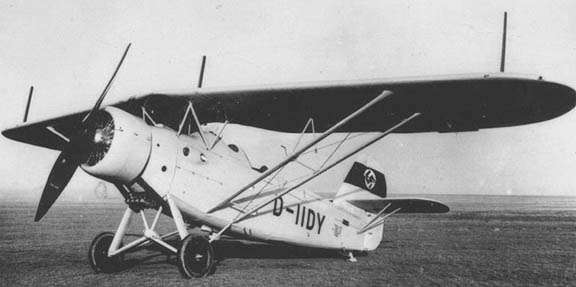
The Heinkel He 46 had a Crew of 2 (Pilot and Observer/Gunner), was powered by a single Bramo SAM 22B (later called 322B) radial piston engine, 493 kW (660 hp). Maximum speed was 155mph, range was 621 miles and the service ceiling was 19,680 feet. Armament consisted of 1 × 7.92 mm (0.312 in) MG 15 machine gun for the rear seat position and up to 20 × 10 kg (22 lb) bombs carried internally.
At the time the Ilmavoimat / Maavoimat evaluation team looked at the He 46, it was already largely phased out of front-line service with the Luftwaffe. The aircraft were offered for sale “as is” at an attractive per-unit cost far below any of the newer aircraft on the market and available. Serious consideration was in fact given to this offer, particularly as delivery was immediate.
OTL Note: A few were still in use in September 1939 two units were still equipped with the He 46 at this stage), and saw service in Poland. By the time Germany invaded France in 1940, all He 46 aircraft had been withdrawn from operational service, although they did continue service in training units. A final period of front-line service came in 1943, when a shortage of more suitable aircraft meant that the Luftwaffe was forced to take the aircraft from the training units and used a number of He 46s on night harassment missions on the Eastern Front. The He 46 saw service in Spain, twenty He 46C-1s given to the Spanish Nationalists in September 1938. The Hungarian aircraft took part in the invasion of the Soviet Union in 1941, equipping the 1st Short-Range Reconnaissance Squadron, and with the 3/2 Short-Range Reconnaissance Squadron in 1942. The Hungarian aircraft were also used as bombers, before being replaced with the Focke-Wulfe 189 during 1943.
Henschel Hs 126 (Germany)
The Henschel Hs 126 was a German two-seat reconnaissance and observation aircraft derived from the Henschel Hs 122. The pilot was seated in a protected cockpit under the parasol wing and the gunner in an open rear cockpit. The prototype aircraft frame was that of a Hs 122A fitted with a Junkers engine. The aircraft was of all-metal construction, the wing was a high lift parasol wing was designed by Friedrich Nicolaus and this allowed the Hs 126 to use short and rough landing strips. The wheels had long struts which gave it a nose high appearance on the ground. To reduce drag, spats were sometimes fitted. Cockpit access was via a ladder on the side and the rear of the cockpit was open to the elements. The gunner/observer had a handheld camera and also operated a Zeiss Rb topographic camera that was located in a bay behind him. The canopy had deflector panels to shield the gunner's gun from the slipstream. The Hs 126 was well received for its good short takeoff and low-speed characteristics which were needed at the time. It was put into service for a few years, but was soon superseded by the general-purpose, STOL Fieseler Fi 156 Storch and the medium-range Focke-Wulf Fw 189 "flying eye".
The first prototype was not entirely up to Luftwaffe standards; it was followed by two more development planes equipped with different engines. Following the third prototype, ten pre-production planes were built in 1937. The Hs 126 entered service in 1938 after operational evaluation with the Legion Kondor contingent to the Spanish Civil War (in 1938 six were delivered to the Condor Legion and served in Aufklarungsgruppe 88. Five of these survived to be turned over to Spain at the end of the Civil War).
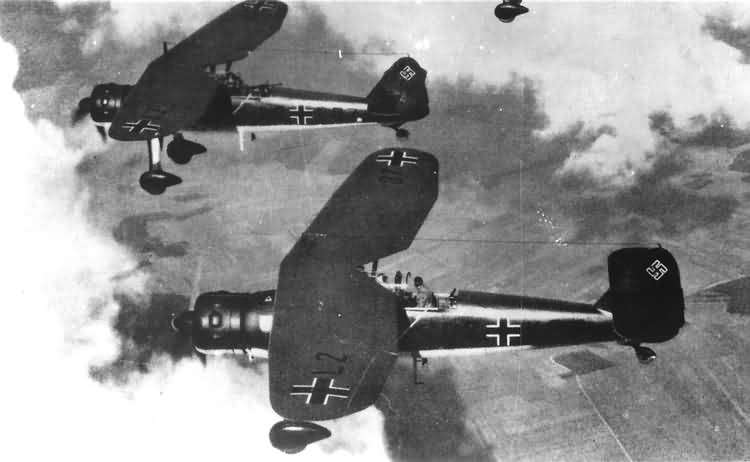
With a Crew of 2 (Pilot and Observer/Gunner), the Henschel He 126 was powered by a single Bramo 323 9-cylinder radial engine, 634 kW (850 hp) giving a maximum speed of 221mph, a range of 1240 miles and a service ceiling of 28,000 feet. Armament consisted of 1 × forward-firing 7.92 mm (.312 in) MG 17 machine gun, 1 × flexible rear-facinng 7.92 mm (.312 in) MG 15 machine gun for the observer/gunner and up to 150 kg (330 lb) of bombs (10 x 22lb/10kg bombs in the fuselage bay and one 110lb bomb under the port wing strut).
The Ilmavoimat / Maavoimat evaluation team considered the Henschel Hs 126 and rated it highly, with excellent STOL capability and good overall performance. It was also in production and Henschel and the German government advised that, if ordered by the Ilmavoimat, the aircraft could be delivered in a short timeframe.
OTL Note: By the time the Hs 126A-1 joined the Luftwaffe, the re-equipping of reconnaissance formations was already well advanced, and by the start of World War II in September 1939, Germany already had several good short range observation and long range recon aircraft. Some 13 squadrons were equipped with the He 126 in the invasion of Poland, where it was able to operate as a bomber and ground attack aircraft, as well as in its normal army co-operation, reconnaissance and artillery spotter roles. Once the fighting was over in Poland the reconnaissance groups began to move west. The Hs 126 began to be seen over the Maginot Line, and it was present in large numbers during the Allies campaign in the west in May 1940. For the first time the Hs 126 came up against large numbers of modern fighters, and was found to be vulnerable - twenty were lost between 10-21 May. It was decided to put the Focke-Wulf Fw 189 into production, but that aircraft wouldn't appear in large numbers until 1942.
By June 1941, there were 48 squadrons of the aircraft in service - in the aftermath of the campaign in France one squadron, 2.(H)/14 took the Hs 126 to North Africa, where it remained in service until August 1942. This left forty-seven squadrons equipped with the Hs 126 for the invasion of the Soviet Unit. The aircraft was still vulnerable, and began to suffer heavy losses. In the spring of 1942 the Fw 189 began to replace it, and by the end of the year it had gone from use in the front line. From 1942 on, most of the surviving Hs 126s were used as training aircraft but some were used as a glider tug and for night-fighting units (Nachtschlachtgruppen) in specialized close-support and ground attack roles. The Hs 126 was used by NSGr 7 in the Balkans, 3./NSGr 11 in Estonia and 2./NSGr 12 in Latvia. It remained in use in the Balkans until April 1945 and the German collapse. Production of the Hs 126 ended in 1941 and the type was retired from the front line in 1942. Some 800 in total were produced.
Lublin R-XIII (Poland)
The Lublin R-XIII was the main Polish army-cooperation plane (observation and liaison plane) of the Polish Air Force, designed in the early-1930s in the Plage i Laśkiewicz factory in Lublin. In 1927, the Polish aviation authorities announced a contest for an army-cooperation plane (in Polish: samolot towarzyszący, literally: "acompanying plane"). In Polish doctrine it was a close reconnaissance, observation and liaison aircraft, operating from casual airfields, providing big Army land units with information about the enemy. The PZL state factory proposed the PZL Ł-2, built in a series of 25 aircraft, while private factory Plage i Laśkiewicz in Lublin proposed the Lublin R-X, designed by Jerzy Rudlicki. It was flown on February 1, 1929. Five aircraft were built for the Air Force as R-Xa, and one was built as a long-distance sports plane. The third competitor was the PWS-5t2.
The contest was won by the R-Xa, having the shortest take-off and landing, and good performance, but the factory was ordered to develop design further. At that time, Rudlicki was working upon an unarmed trainer aircraft R-XIV and an observation aircraft R-XV. Both were new designs, basing upon the R-X construction. Number XIII was initially omitted in designations as "unlucky". In February 1930, the Polish Air Force ordered 15 of R-XIV. The first serial plane was built in June 1930, without an earlier prototype, and all were delivered by July 1931. The R-XIV was a two-seater, parasol wing aircraft, with a 220 hp radial engine and fixed landing gear. The crewman sat in open cockpits in tandem. The R-XV was not ordered, but the Air Force demanded instead, that two R-XIV should be armed with an observer's machine gun, for testing. Thus armed, the R-XIV, fitted also with other minor modifications, most notably a changed shape of a tail fin, became the first prototype of the army-cooperation plane and was designated the Lublin R-XIII.
The aircraft was of mixed construction (steel and wood) and a monoplane, conventional in layout, with braced high wings, canvas and plywood covered (the front part of the fuselage was metal covered). A conventional fixed landing gear, with a tailskid was fitted. The Crew of two sat in tandem in an open cockpit, with twin controls. The observer had a 7.7 mm Vickers K or Lewis machine gun on a ring mounting (rarely, 2 machine guns). The aircraft could be fitted with racks for small bombs of 12–25 kg. A 9 cylinder air-cooled Wright Whirlwind J-5 radial engine (produced in Poland) with 162 kW (220 hp) nominal power and 176 kW (240 hp) take-off power (on 22 aircraft R-XIIIF, 250 kW (340 hp) engine Skoda G-1620A Mors-I wad fitted). A Two-blade wooden or metal propeller was also fitted. A 200 liter Fuel tank in the fuselage could be dropped in case of fire emergency (R-XIV - 135 liter tank).
On July 21, 1931, 50 aircraft R-XIII were ordered. The first series of 30 were designated R-XIIIA, the next 20 were R-XIIIB. Both variants differed mostly in a type of a machine gun ring mounting. The first serial R-XIII was built on June 7, 1932. By March 11, 1933, all were given to the Air Force. In 1932, next 170 aircraft were ordered. 48 were built in R-XIIIC variant with minor modifications, then 95 were built in a most numerous R-XIIID variant. It introduced visible changes, like a Townend ring on a radial engine, and a new engine cowling. It also had new type of a machine gun ring mounting. The first R-XIIID was tested in February, 1933. All aircraft were given to the Air Force by March 2, 1935. During repairs, older models A, B and C were modified to R-XIIID standard as well.
In 1933, Jerzy Rudlicki proposed a new design R-XXI, for a new contest for R-XIII successor, but it was not accepted (the contest was won by the RWD-14 Czapla). However, some of the R-XXI features, like the higher and rounded in cross-section fuselage and a changed tail fin shape, were found in later R-XIII variants. A single prototype of the R-XIIIE was built in 1934, fitted with a more powerful 360 hp engine Gnome-Rhone 7K Titan engine, but it was not produced. Another variant, the R-XIII-F introduced new, Polish-designed 340 hp engine Skoda G-1620A Mors-I engine. It had no Townend ring on cylinders of the radial engine. After one prototype (no. 56.101), a series of 50 R-XIII-F’s were ordered in 1934. After seven aircraft had been delivered, the Polish aviation authorities refused to buy a further 18 nearly-completed aircraft, as they were planning to completely nationalize the aviation industry in Poland. As a result, the Plage i Laśkiewicz factory went bankrupt in late 1935, and it was next nationalized under the name LWS (Lubelska Wytwórnia Samolotów - Lublin Aircraft Works). The 18 R-XIIIF, were them bought at scrap price, were completed, and the next series of 32 was built. All R-XIII-F’s were delivered to the Polish Air Force by 1938. However, only 26 of them were completed with Mors engines (and these were mostly used for training or staff liaison), while 32 had standard 220 hp Wright engines, lowering their performance to R-XIII-D level.
In the early 1930s the R-XIII was quite a successful plane for its purpose. It had a very short take-off (68 m for R-XIIIA) and landing, enabling it to operate from rough fields and meadows. However, only some of R-XIIIs were equipped with a radio and a camera, which lowered their usefulness. In 1932-1936 they were used in three-aircraft liaison platoons, being the basic Polish army-cooperation plane. In 1937 they were formed into army-cooperation escadres (eskadra towarzysząca), in 1939 reformed into observation escadres (eskadra obserwacyjna). In 1939 some of the R-XIII’s were replaced by the RWD-14b Czapla, which was not much more modern. A planned replacement was a modern LWS-3 Mewa, but it was not introduced prior to the outbreak of war.
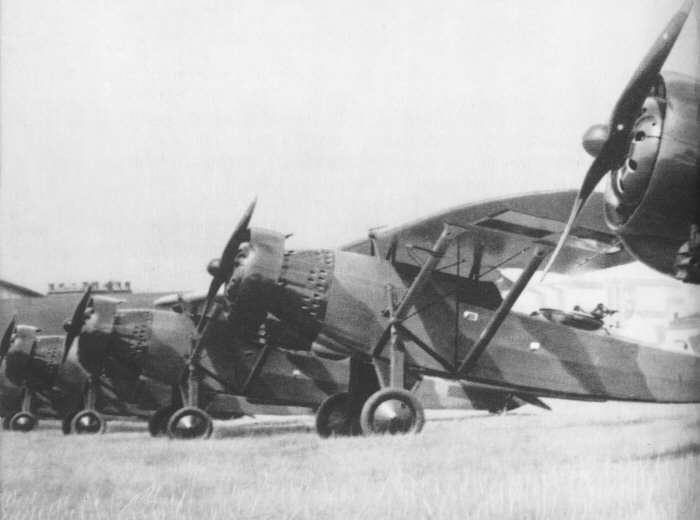
With a Crew of 2 (Pilot and Observer), the Lublin R-XIII was powered by a single Wright Whirlwind J-5 9-cylinder radial engine, 162 kW (220 hp) giving a maximum speed of 115mph, a range of 450 miles and a service ceiling of 13,000 feet.
The aircraft was tested by the Ilmavoimat / Maavoimat evaluation team but the only feature that rated highly was the short take-off and landing distances which enabled it to operate from fields and meadows, and the rough field capability. Otherwise, the aircraft was rated as more or less obsolete, being intended to be replaced even in Polish Air Force service.
OTL Note: On the eve of the Invasion of Poland in September 1939, the Polish Air Force had about 150 R-XIII. Of these, 49 were in combat units, 30 in reserve, about 30 in training units and about 40 in repair workshops. In combat units, the R-XIII’s were used in 7 observation escadres (out of 12), with each escadre having 7 aircraft. The 16th Escadre was the C-in-C reserve, while the others were distributed among the Field Armies. The R-XIII was no match for any of the Luftwaffe fighters, bombers or even reconnaissance aircraft, being much slower, and armed with only one machine gun, but despite this they were actively used for close reconnaissance and liaison tasks. About 40 R-XIII from combat units were destroyed during the campaign, but only some of these were shot down by the German aircraft or flak. During the campaign, 9 aircraft were given to observation escadres as replenishment. Some planes were also used in wartime improvised units from different air bases. About 10 combat aircraft and 7 from other units were withdrawn to Romania. A number of aircraft were bombed by the Germans in air bases or burned by withdrawing Poles. None have survived to today.
LWS-3 Mewa (“Seagull”) (Poland)
The LWS-3 Mewa ("Seagull") was a Polish observation and close reconnaissance aircraft, designed in the late-1930s by the LWS factory as the successor to the now-obsolete Lublin R-XIII army cooperation aircraft. The first sketches were drawn up in 1936 by Zbysław Ciołkosz, the chief designer of the LWS factory (Lubelska Wytwórnia Samolotów). It was similar to the earlier light ambulance plane LWS-2, which itself was inspired by the RW-9 STOL aircraft wing design. After Ciołkosz left LWS in 1937, the project, named LWS-3 Mewa, was modified and further developed at the LWS bureau. In the same year, the Polish Air Force ordered three prototypes. The first prototype, the LWS-3/I was flown in November 1937. It revealed some handling deficiencies, but otherwise had good performance. Following tests, the design of the aircraft was improved. In 1938, the second prototype LWS-3/II was flown. It had a crank mechanism to lower the tailfin and rudder in order to increase the angle of rear machine gun fire, but as it proved impractical, the next prototype LWS-3/III which flew in autumn 1938 again had a classic tailfin design. The third prototype, with some further changes, among others to the engine cover and canopy, was the pattern for serial production. The first prototype was exhibited at the 16th International Paris Aviation Salon in November 1938 (as "PZL Mewa"), where it met with considerable interest.
The aircraft was a mixed construction (steel and wood) monoplane, conventional in layout, with canvas and plywood covered braced high wings. The wings folded rearwards. Conventional fixed landing gear, with a tailwheel. The crew of two sat in tandem in a glassed-in enclosed cockpit, with large transparent canopy surfaces. The crew had dual controls. Prototypes were armed with two forward-firing 7.92 mm machine guns fixed on the undercarriage covers, but it appeared, that their accuracy was low due to vibration, and (according to J. Cynk) production aircraft were intended to have twin machine guns fitted on the fuselage sides. The observer had a 7.92 mm wz.37 machine gun in a rear station, covered by an opening canopy. The engine was a Gnome-Rhône 14M01 14 cylinder air-cooled radial engine (prototypes) or 14M05 (serial) with 660 hp (490 kW) nominal power and 730 hp (540 kW) maximum power. Three-blade metal propeller (planned) or two-blade wooden propeller (installed on some aircraft). Fuel capacity about 380 liters in wing fuel tanks. The aircraft was fitted with a radio and cameras.
Contrary to its direct predecessor, RWD-14 Czapla, the Mewa was a modern close reconnaissance plane, comparable with leading foreign aircraft of that period, like Henschel Hs 126 or Westland Lysander. Its advantages were quite short take-off and landing, which enabled it to operate from fields. Official tests were satisfactory, and in 1938 the Polish Air Force ordered 200 aircraft of the production variant LWS-3A Mewa (or "Mewa A"). Production started in early 1939, and first aircraft were to be ready in the summer. In August 1939, about 30 aircraft were almost completed (10 ready, but lacking propellers, 7 in painting and 10 in final assembly). At the time the LWS-3B Mewa variant powered with a Fiat R74 860 hp (640 kW) engine was being developed for sale to Bulgaria, as was a floatplane LWS-3H (hydro) variant for Polish naval aviation. None were produced due to the outbreak of war.
The Ilmavoimat / Maavoimat evaluation team performed an extensive series of test flights with the the second Mewa prototype LWS-3/II in early 1938. The aircraft rated comparatively higher and remained in consideration up to the final decision being made. Speed and STOL performance were both excellent and the aircraft itself was rugged and well-constructed.
The LWS-3 Mewa had a Crew of 2 (Pilot and Observer) and was powered by a single Gnome-Rhône 14M05 air cooled radial engine with a three-blade metal variable pitch propeller (planned) or two-blade wooden fixed pitch propeller (installed on some aircraft) rated at 492 kW (660 hp). Maximum speed was 224mph, range was 436 miles and the service ceiling was 27,880 feet. Armament consisted of 2× fixed, forward-firing 7.92 mm PWU wz.36 machine guns, 1× rearward-firing 7.92 mm PWU karabin maszynowy obserwatora wz.37 for the observer.
OTL Note: None of the aircraft entered service in the Polish Air Force before the outbreak of the World War II on September 1, 1939. The problem was with propellers, which had to be delivered from France. The first two aircraft were ready for delivery on September 2, but one of them was damaged on the factory airfield in Lublin by German bombers. The fate of the other one is not clear. Following that, some of the almost finished aircraft were hidden in Lublin park and in a forest nearby. A couple were modified to use wooden propellers with a fixed pitch. Two such aircraft were evacuated to an airfield near Lwów, and given over to the 26th Observation Escadre on September 12. One of them crashed during a night landing on Medyka airfield near Przemyśl on the same day, the other was burned on September 17, when it could not be evacuated. According to some sources, two other Mewas were assigned to the 23rd Observation Escadre on September 11, but this has not been confirmed. It is not clear whether any of these aircraft were armed. One of the aircraft was also seen during evacuation to Pinsk in mid-September. The rest of the uncompleted aircraft were seized by Germans and scrapped.
Further OTL Note: In 1939, the LWS-7 Mewa II was being designed at LWS as a further development of the LWS-3 Mewa. Complete technical drawings were apparantly prepared in summer 1939 and the first prototype was planned to be built in autumn 1939. The development schedule planned for a first flight in Spring or Summer 1940 and the start of production in Autumn/Winter 1940. The first production LWS-7 Mewa II was to be handed over to Polish Air Force in early 1941. The LWS-7 utilised new wings and a semi-monocoque fuselage with less drag and was also to be fitted with a more powerful 916 hp (683 kW) PZL Pegaz XX engine (Bristol Pegasus XX) or a planned 1000 hp (750 kW) PZL Waran. A maximum speed of 400–420 km/h (248-260mph) was estimated from tests performed by the Aerodynamic Institute of the Warsaw University of Technology. Before the war, only a wooden model for aerodynamics testing had been completed. Drawings of the LWS-7 were evacuated in September 1939 to the Polish embassy in Romania by the LWS director Aleksander Sipowicz. Many publications claim that they were handed over to the Bulgarians, but it is not clear whether or not this is correct (possibly, plans for the LWS-3B may have been turned over as the Bulgarian-built KB-11 Fazan reconnaissance plane bore more than a passing resemblance to the Mewa).
Meridionali Ro.37 (Italy)
Meridionali, then named Officine Ferroviarie Meridionali, first became involved in the Italian aircraft industry in 1923, beginning manufacturing activities two years later through the licence-construction of Fokker designs. In 1934 the Societa Anonima Industrie Aeronautiche Romeo was formed to takeover the aeronautical activities of the Officine Ferroviarie Meridionali (Aeroplani Romeo). In 1936, the Societa Anonima Industrie Aeronautiche Romeo absorbed all the industrial activities of the Officine Ferroviarie Meridionali and changed its name to Industrie Meccaniche e Aeronautiche Meridionali (IMAM).
In the early 1930’s, the Regia Aeronautica put out a requirement for a light reconnaissance aircraft and also a heavier reconnaissance aeroplane. The first should have a 350 km/h (190 knots/220 mph) maximum speed, five hours endurance, three machine-guns and a bomblets dispenser, armour, and the capability to operate from improvised airfields. The heavier one should have a 325 km/h maximum speed, at least 1,300 km (800 miles) endurance, 7,000 m (22,750 feet) ceiling, climb to 5,000m (16,000) in 19 minutes, three crew, five weapons, high wing and other details. IMAM proposed the IMAM Ro.30, an improved Ro.1 (the Ro.1 was actually a Fokker C.V built under license in Italy) with a defensive turret and better engine. Limited numbers were built but a larger order was rejected by the Regio Esercito and the aircraft was not chosen for mass production, being only capable of 200 km/h (110 knots), five hours endurance, a climb rate of 4,000 m (13,000 feet) in 20 minutes, and had three weapons.
IMAM did not give up and designed a new aircraft, the Romeo Ro.37, which first flew in 1933. The aircraft was an unequal-span single-bay biplane of mixed wood and metal construction. Its design included fixed tailwheel landing gear, all three wheels being provided with spats; a braced tail unit incorporating a variable-incidence tailplane; and accommodation for two in tandem enclosed cockpits, Power was provided by a 522kW Fiat A.30RA Vee engine of 560hp. It reached 300 km/h (162 knots) and perhaps even more with this engine, the same as that used by the Fiat CR.32. An improved Ro.37bis was developed subsequently, and this introduced an optional radial powerplant comprising either the Piaggio P. IX or P.X supercharged engine. The better reliability of this engine was considered more desirable and so this was the main version produced. The Ro.37 was generally liked by pilots, and the only complaint was that aircraft was prone to damage to the undercarriage, and had some engine faults.
It was similar in many ways to the Hawker Hind, rather than a light army co-operation aircraft, and its performance was similar to the later Westland Lysander, but the contemporary British design was the Hawker Hector. Both models proved popular for their day, with production of the Ro.37 and Ro.37bis exceeding 160 and 475 respectively. Ro.37 were also quite widely exported (ten to Uruguay, sixteen to Afghanistan, fourteen to Hungary, eight to Austria, and one to Ecuador) and around 280 were in service with the Regia Aeronautica in 1940 in thirty squadrons.
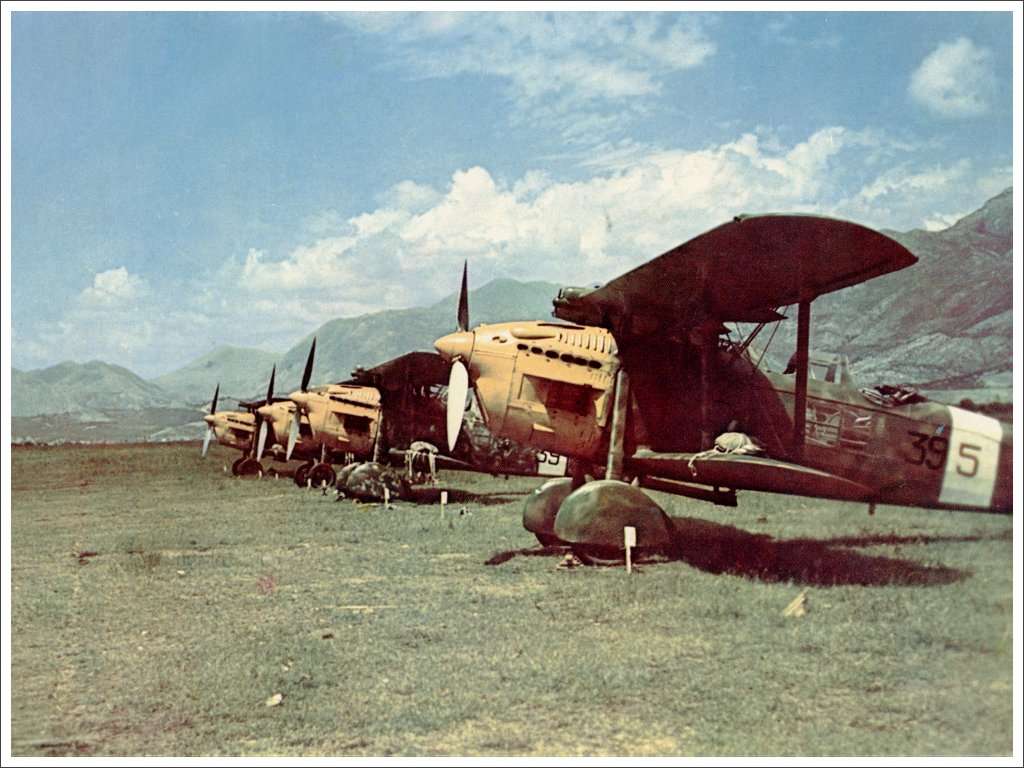
The Ro.37 had a Crew of 2, was powered by a single Piaggio P.IX RC.40, 9-cylinder, air-cooled, radial, piston engine of 560 hp (418 kW) with a maximum speed of 205mph, a range of 696 miles and a service ceiling of 23,620 feet. Defensive armament consisted of three machine guns (two in the nose and one flexible mount machine gun in the rear cockpit) and very good agility. Bombload consisted of 397 lb (180kg) of bombs (twelve x 15 kg bombs) on underfuselage racks.
IMAM also built a successor to the Ro.37, the Ro.45. This was an enhanced Ro.37 that first flew as a prototype on 10 December 1935. The 820 hp Isotta-Fraschini Asso XI.RC40 engine boosted maximum speed slightly to 217mph, increased the ceiling to 26,200 feet, and endurance to 1,398 miles. Destined for long-range reconnaissance and light bombing, it remained a single prototype for unknown reasons: perhaps it was rated too costly or the improvements over the Ro.37 were not enough. At any rate, the Ilmavoimat / Maavoimat evaluated both the Ro.37 and the single Ro.45 prototype but, as with the British Hawker Hector, considered the design unsuitable for their overall requirement.
OTL Note: Ro.37 and Ro.37bis aircraft were involved in the Spanish Civil War from October 1936, when the first 10 arrived. Another 26 (possibly 58) went to this theatre and were used for many missions and tasks. They were used as assault aircraft, even though they were unarmoured. The results were satisfactory and some were even converted to a single-seat machine for use as attack fighters. The two-seat versions were used as heavy fighters, providing protection for S.81 bombers from Republican I-15s. It is not known if there were any air-to-air victories. They were also used extensively by the Regia Aeronautica during Mussolini's invasion of Abyssinia between October 1935 and May 1936 and during the Italian occupation of that country until 1941. Some 275 Ro.37bis aircraft were in service with the Regia Aeronautica when Italy became involved in World War II, and these saw first-line service in the East and North African campaigns and in the Balkans. Some were in service up to 1943 and perhaps even later. They were very vulnerable, but in the war Italy did not have sufficient resources to produce a better observation aircraft, not even the Ro.63, a superior aircraft, similar to the Storch, but with more endurance. After withdrawal from first-line service they found a variety of uses, but all had been retired before Italy's armistice with the Allies on 8 September 1943. The aircraft was produced until 1939 with a total of 569 (237 + 332bis) produced.
And a completely off-topic FYI for if you’re really interested in older aircraft: The remnants of the Ro.37’s sold to Afghanisatan were found northeast of Kabul by the Italian Army’s 132nd Artillery Regiment "Ariete". The link if you want to read more is
http://www.paginedidifesa.it/2006/pdd_060331.html Of the 16 Ro.37bis sold to Afghanistan in 1938, 6 relics were recovered by an Italian / US team to the North East of Kabul and one of them is exhibited at Vigna di Valle Museum waiting to be completely restored. Tom Martin, LTC (Ret) of the US Army, recently sent the following interesting pictures of the recovery of the Ro.37 with the following explaination: “I was the garrison commander at the Kabul Military Training Center and “neighbor” to the Italian garrison at Camp Invicta. Their garrison commander, LTC Mauro D’ Ubaldi, and I became friends through mutual security needs and engineer projects. He approached me and asked if I would help his team come onto our site and remove from the boneyard the flight of planes where this plane came from (another photo shows how it was in the boneyard and a detail of a data plate).
….
We also recovered wings and there were scraps of material with paint on some of the parts which showed the material and colors.”
Messerschmitt Bf108 (Germany)
The Messerschmitt Bf 108 Taifun was a German single-engine sports and touring aircraft developed by Bayerische Flugzeugwerke (Bavarian Aircraft Works). The Bf 108 was of all-metal construction. Originally designated the M 37, the aircraft was designed as a four-seat sports/recreation aircraft for competition in the 4th Challenge de Tourisme Internationale (1934). The M 37 prototype flew first in spring 1934 powered by a 250 PS (247 hp, 184 kW) Hirth HM 8U inverted-V engine, which drove a three-blade propeller. Although it was outperformed by several other aircraft in the competition, the M 37's overall performance marked it as a popular choice for record flights. Particular among these traits was its extremely low fuel consumption rate, good handling, and superb takeoff and landing characteristics. One of the first major changes made to the production variants was to adapt the fuselage for a four-seat configuration.
The Bf 108A first flew in 1934, followed by the Bf 108B in 1935. The Bf 108B used the Argus As 10 air-cooled inverted V8 engine. The nickname Taifun (German for "typhoon") was given to her own aircraft by Elly Beinhorn, a well known German pilot, and was generally adopted. The Bf 108 was adopted into Luftwaffe service during World War II, where it was primarily used as a personnel transport and liaison aircraft. It was exported as a civilian aircraft or as a military passenger-carrying variant to a number of countries prior to WW2.
With a Crew of 1 and seating for 3 Passengers, the Bf108 was powered by a single Argus As 10C air-cooled inverted V-8, 240 PS (174 kW) with a maximum speed of 190mph, a range of 620 miles and a service ceiling of 20,300 feet (with 4 people and luggage).
The Ilmavoimat / Maavoimat evaluated both the Bf108 but considered the design unsuitable for their overall requirement, correctly assessing the aircraft as a light passenger aircraft unsuitable for combat reconnaisance and without any real STOL capability.
Messerschmitt Bf163 (Germany)
During the autumn of 1935, the considerable potential of the Fieseler Fi 156 project for the tasks of short range reconnaissance and aerial observation had prompted the RLM to draw up a requirement for an army co-operation and observation aircraft with its performance parameters. The requirement stipulated the use of the Argus As 10 or the Hirth HM 508 engine and placed emphasis on short field performance, maximum possible all-round view for the two crew members, and a wide range of speed. It was intended that the resultant aircraft, which the Siebel Si 201 was also designed to compete for, would be evaluated in competition with the Fi 156. The Bf 163 followed closely the formula established by the Fi 156 in being a high-wing braced monoplane with a metal structure, automatic leading edge wing slots, double slotted flaps, and an exceptionally tall undercarriage. The aircraft's most interesting feature was the provision for varying the incidence of the entire wing which swivelled on its mainspar, the bracing struts being attached to the fuselage by ball joints and changing their angle with movement of the wing. Construction of the sole prototype was entrusted to Weserflug, though it retained the RLM prefix for BFW (Bf).
First flown on 19 February 1938 and powered by the Argus As 10C, the Bf 163 V1 proved to have similar performance characteristics to those of the Fi 156 but was more complex and expensive. Although some components for a second prototype were manufactured, the Bf 163 V2 was not completed and further work on the Bf 163 was terminated in favor of the Fieseler Fi 156. In a very rare decision, the RLM issued the airframe designation number 8-163 for the Me 163 Komet rocket-propelled interceptor, after having used the number for the Bf 163. The two aircraft are distinguished by the abbreviation: the earlier Bf 163, and the later Me 163. The new "Me" prefix was adopted for all new designs of Messerschmitt aircraft, after the company's official name of Bayerische Flugzeugwerke (BFW) was changed to Messerschmitt AG in July of 1938.
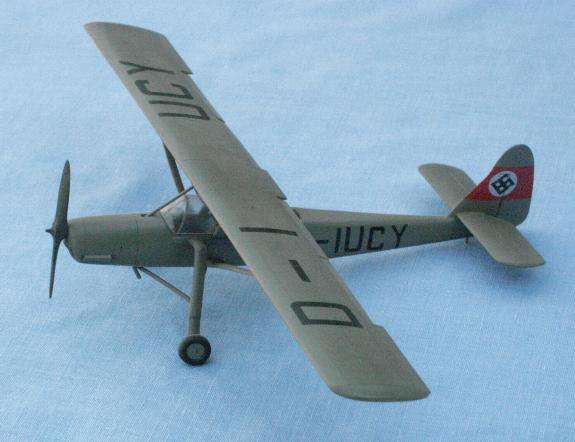
Couldn’t track down a photo online of the Bf 163 – closest I could find was a model….
With a Crew of 2, the Messerschmidt Bf 163 was powered by a single Argus As 10C 8-cylinder inverted-vee air cooled engine, 179 kW (240 hp) and had a maximum speed of 112mph. Performance characteristics overall were very similar to the Fi 156.
The Ilmavoimat / Maavoimat evaluated the Bf 163 but considered that as the Germans had already ordered the Fi 156 Storch into production, while the Bf 163 was a good aircraft it was so similar in performance and capabilities to the Fi 156 that it probably wasn’t going anywhere. It remained under consideration but as an unlikely fallback option, given that Bayerische Flugzeugwerke (BFW) was unlikely to produce the aircraft only to meet a small Finnish order. License production was however contemplated.
Piper J3 (USA)
The Piper J3 had its origins in 1927 when two barnstorming brothers, C. Gilbert and Gordon Taylor, formed the Taylor Brothers Aircraft Company to produce and market a small, high-wing, two-seat monoplane named the “Chummy,” designed a year earlier by Gilbert. In September 1930, Taylor embarked on the production of a two-seat tandem low-powered aircraft, designated the Taylor E-2. The E-2 featured a design with wings mounted high on the fuselage, an open cockpit, fabric-covered tubular steel fuselage and wooden wings. It was powered by a 20-horsepower (15-kilowatt) Brownbach "Tiger Kitten" engine. The “Tiger Kitten” roared but the little engine was not strong enough to power the E-2. On September 12, 1930, a test flight of the Taylor E-2 ended abruptly when the aircraft ran out of runway—the underpowered engine was unable to lift the monoplane higher than five feet (1.5 meters) above the ground. Later that year, Taylor Brothers Aircraft Company went bankrupt.
The so-called “Lindbergh Boom” in general aviation following the landmark 1927 solo flight from New York to Paris inspired oilman William T. Piper to purchase the assets of the Taylor Aircraft Corporation for $761 as it emerged from bankruptcy protection in 1931. Piper effectively took control of the firm when he assumed the position of corporate secretary-treasurer, although he retained Gilbert Taylor in the role of president. Piper, often called the “Henry Ford of Aviation,” believed that a simple-to-operate low-cost private airplane would flourish, even in the darkest depths of the Great Depression. Shortly after Piper assumed control of the company, Taylor Aircraft introduced an improved E-2 airframe, powered by the newly developed Continental Motors Corporation 37-horsepower (28-kilowatt) A-4O engine. The new Taylor E-2, now known as the “Cub,” was meant to be an affordable aircraft that would encourage interest in aviation and was awarded its type certificate on July 11, 1931 and licensed by the U.S. Department of Commerce for manufacture. Twenty-two Taylor E-2 Cubs were sold during 1931, retailing for $1,325; by 1935, sales had increased to more than 200 E-2 Cubs.
In 1936, an earlier Cub was altered by an employee, 19-year-old aircraft designer Walter Jamouneau. The revamping included rounded angles and other major changes, and the aircraft was reintroduced in 1936 as the Taylor J-2 Cub – the ‘J' standing for Jamouneau. When he saw the redesign, Taylor was so incensed that he fired Jamouneau. Piper, however, had encouraged Jamouneau's changes, and hired him back. But the changes to the fundamental Cub design were unacceptable to company founder Gilbert Taylor, who soon parted ways with William Piper —though only after Piper bought out his remaining interest in the company. Taylor went on to establish the new Taylorcraft Aviation Company of Alliance, Ohio. Although sales were initially slow, about 1,200 J-2s were produced before a fire in the Piper factory ended its production in 1938. William Piper relocated his manufacturing operation and several hundred employees to Lock Haven, Pennsylvania, and the Piper Aircraft Corporation was born. By year's end, it had built 687 Piper airplanes. The following year, the upgraded Piper J-3 Cub was unveiled, featuring further changes by Jamouneau and powered by a 40-horsepower (30-kilowatt) engine built by Continental, Lycoming, or Franklin and selling for $1,300. Piper soon introduced a uniform color scheme for the Cubs—bright yellow trimmed in black. Engine horsepower continued to increase, first to 50 horsepower (37 kilowatts), then to 65 horsepower (48 kilowatts) by 1940.
In early 1938, the Ilmavoimat / Maavoimat test team evaluated the Piper J-2. The J-2 had excellent STOL capability, able to take off in less than 300 feet by firewalling the throttle, lifting the tail immediately, pulling full flaps at 45 knots and levering the stick back into the pilots lap. The J-3 was near stallproof, with a stall speed of 34 knots, and short field approaches were easy with full flaps.
The Piper J-3 could carry a Pilot and on passenger, was powered by a single Continental A-65-8 air-cooled flat four, 65 hp (48 kW) at 2,350 rpm and had a maximum speed of 87mph. Range was 220 miles and the service ceiling was 11,500 feet.
OTL Note: With the outbreak of hostilities in Europe in 1939, there was a growing realization that the United States might soon be drawn into World War II, resulted in the formation of the Civilian Pilot Training Program (CPTP). The Piper J-3 Cub would play an integral role in the success of the CPTP, achieving legendary status; A number of different engines, air-cooled flat-four engine configuration and a very few "J3P"-designated examples equipped with Lenape Papoose 3-cylinder radial engines were used to power J-3 Cubs, and resulted in differing model designations for each type: the J3C model used the Continental A-65, the J3F used the Franklin 4AC engine, and the J3L used the Lycoming O-145. The Piper J-3 Cub became the primary trainer aircraft of the CPTP — 75 percent of all new pilots in the CPTP (from a total of 435,165 graduates) were trained in Cubs. By war's end, 80 percent of all United States military pilots received their initial flight training in Piper Cubs. The need for new pilots created an insatiable appetite for the Cub. In 1940, the year before the United States' entry into the war, 3,016 Cubs were built; soon, wartime demands would increase that production rate to one Piper J-3 Cub being built every 20 minutes.
The Piper Cub quickly became a familiar sight. First Lady Eleanor Roosevelt took a flight in a J-3 Cub, posing for a series of publicity photos to help promote the CPTP. Newsreels and newspapers of the era often featured images of wartime leaders, such as Generals Dwight Eisenhower, George Patton and George Marshall, flying around European battlefields in Piper Cubs. Civilian-owned Cubs joined the war effort as part of the newly formed Civil Air Patrol (CAP), patrolling the Eastern Seaboard and Gulf Coast in a constant search for German U-boats and survivors of U-boat attacks. Piper developed a military variant ("All we had to do," Bill Jr. is quoted as saying, "was paint the Cub olive drab to produce a military airplane"), variously designated as the O-59 (1941), L-4 (after April 1942), and NE (U.S. Navy). The variety of models, as well as similar, tandem-cockpit accommodation aircraft from Aeronca and Taylorcraft, were collectively nicknamed “Grasshoppers” and used extensively in World War II for reconnaissance, transporting supplies and medical evacuation.
L-4s were also sometimes equipped with lashed-on infantry bazookas for ground attack. These proved to be most useful during Operation Overlord, in the hedgerowed bocage country south of the invasion beaches, for spotting hidden German tanks waiting in ambush for American and British tanks of the invasion forces. Since the L-4 Grasshoppers were mechanically identical to the J-3 civilian version, the military versions were distinguished by the presence of rearwards-entended Plexiglas windows going over the top of the wing and behind the rear-seat passenger, somewhat aft of the wing's trailing edge. Nearly 5,700 L-4s were produced for the U.S. Army and 250 for the U.S. Navy as "elementary trainers".
Potez 39 (France)
The Potez 39 was designed to a 1928 requirement for an aircraft to replace the Potez 25 and Breguet 19 machines then in service with the French Air Force in the A2 (Artillerie Biplace - two seat observation aircraft) role. The aircraft was a parasol monoplane of all-metal construction, the first all metal Potez aircraft, with a tailwheel undercarriage. It was powered by a Hispano-Suiza 12H engine of 580 bhp (433 kW) as required by the specification. The crew of two sat in open, tandem cockpits, with the observer being armed with two Lewis guns on a ring mounting, and the pilot being armed with a single synchronised Darne machine gun, while light bombs could be carried in a small internal bomb-bay and on external racks. A fixed camera was fitted, operating through a hatch in the fuselage floor. The prototype flew in January 1930. Although the Breguet 27 was selected as the winner of the competition, both it and the Potez, which was runner-up, were chosen for production. Compared to the Potez 25, of which over 2000 were ordered, production of the Potez 39 series was on a small scale, 100 Potez 390 aircraft being built for France and 12 Potez 391 variants, powered by a Lorraine-Dietrich 12H engine of 700 bhp, for the Peruvian Air Force. A number of prototype and development aircraft, including a floatplane, were tested but no further orders were received.
The first production aircraft were delivered in 1934 but shortly afterwards, the Potez 39 began to be replaced by ANF Les Mureaux 117, Amiot 143 and Potez 540 aircraft ( in 1936). At the outbreak of the Second World War the Potez 39 remained in service with seven observation squadrons of the French Air Force, but these, along with the Breguet 27-equipped units, were withdrawn from the front in October 1939. The Potez 39 continued to serve in training units until the armistice of June 1940, at which time 41 remained in Metropolitan France. These aircraft were scrapped soon afterwards.
The Potez 39 had a Crew of 2 and was powered by a single Hispano-Suiza 12H 12-cylinder liquid-cooled V12 engine, 580 hp (433 kW) with a maximum speed of 149mph, a range of 497 miles and a service ceiling of 23,000 feet. Armament consisted of 1 x fixed 7.7 mm machine-gun firing forward and 2 x 7.7 mm machine-guns in a flexible mount in the observer's position. Up to 120kg of bombs could be carried.
In early 1938, the Ilmavoimat / Maavoimat test team evaluated the Potez 39. Given that the aircraft was already being replaced in service in France, the evaluation was cursory and simply confirmed that the aircraft was obsolete and should not be considered further.
Potez 540 (France)
This two-engine aircraft was built by the French Potez company to fulfill a 1932 specification for a new reconnaissance bomber. Built as a private venture, this aircraft, designated the Potez 54, flew for the first time on 14 November 1933. Designed by Louis Coroller, it was intended as a four-seat aircraft capable of performing duties such as bomber, transport and long-range reconnaissance. The Potez 54 was a high-wing monoplane, of mixed wood and metal covering over a steel tube frame. The prototype had twin fins and rudders, and was powered by two 515 kW (690 hp) Hispano-Suiza 12Xbrs V-12 engines in streamlined nacelles, which were connected to the fuselage by stub wings. The main landing gear units retracted into the nacelles, and auxiliary bomb racks were mounted beneath the stub wings. There were manually-operated turrets at the nose and dorsal positions, as well as a semi-retractable dustbin-style ventral turret. During development, the original tailplane was replaced by a single fin and rudder, and in this form, the type was re-designated the Potez 540 and delivered to the Armee de I'Air on 25 November 1934. A total of 192 Potez 540s were built.
Their first combat was in the Spanish Civil War, where they were employed by the Spanish Republicans. In the late 1930s, these aircraft were becoming obsolete so they were withdrawn from reconnaissance and bombing duties and were relegated to French transport units. They were also employed as paratrooper training and transport aircraft. By September 1939 and the beginning of World War II, they had been largely transferred to the French colonies in North Africa, where they continued to function in transport and paratrooper service. Their role in even these secondary assignments was problematic given their poor defensive armament and vulnerability to modern enemy fighters. Following the French capitulation to Germany in June 1940, those Potez 540s still flying served the Vichy French Air Force mainly in the French overseas colonies. Most of these machines were retired or destroyed by late 1943
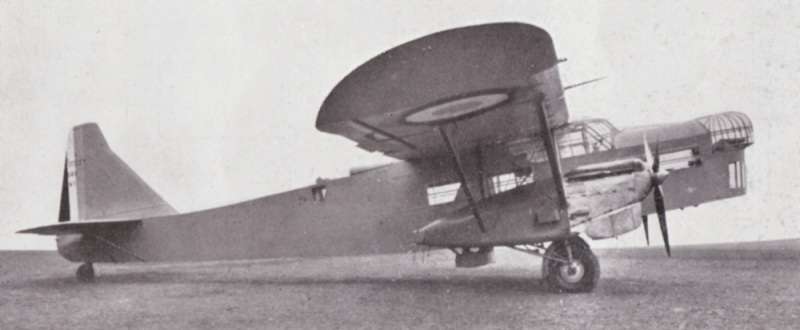
The Potez 54- had a crew of between 4 and 7 and was designed as a reconnaissance bomber. Powered by 2 Hispano-Suiza HS 12 Xirs/Xjrs V-12 liquid-cooled piston engines of 515 kW (690 hp) each, it had a maximum speed of 193 mph, a range of 777 miles and a service ceiling of 32,810 feet. Defensive armament consisted of 3 to 5× 7.5 mm (0.295 in) MAC 1934 machine guns in flexible nose, dorsal, and ventral positions. Bombload consisted of 4 × 225 kg (496 lb) bombs on external racks or 10 × 55 kg (110 lb) bombs in bomb bay when operated as a bomber.
In early 1938, the Ilmavoimat / Maavoimat test team evaluated the Potez 540. Given the role that the aircraft was expected to fill, the evaluation was cursory and simply confirmed that the aircraft was completely unsuited to the intended role and should not be considered further. In point of fact, the evaluation team were highly annoyed that the French would even put the aircraft forward for consideration given the obvious unsuitability when evaluated against the requirements the Ilmavoimat had provided.
Potez 637 (France)
The original Potez 630 was built to meet the requirements of a 1934 heavy fighter specification which also resulted in the successful Breguet 690 series of attack aircraft. The prototype first flew in 1936 and proved to have excellent handling qualities. The Potez 630 was a twin engine, monoplane, fully metallic three-seater with efficient aerodynamic lines and twin tailplanes. The long glasshouse hosted the pilot, an observer or commander who was only aboard if the mission required it, and a rear gunner who manned a single flexible light machine gun. Only very minor changes were required and an order for 80 was placed in 1937. Simultaneously 80 Potez 631 C3 fighters were ordered, these having Gnome-Rhône 14M radial engines rather than the Hispano-Suiza 14AB10/11 of the Potez 630. Fifty additional Potez 631s were ordered in 1938 of which 20 were diverted to Finland (OTL, these aircraft did not arrive in Finland). A typical feature of the 630 and 631 was the frontal armament, which originally consisted of two 20 mm Hispano-Suiza HS.404 cannons in gondolas under the fuselage, though sometimes one of the cannons was replaced by a MAC 1934. Later in their career, 631s received four similar light machine guns in gondolas under the outer wings, though it was theoretically possible to fit six.
Dissatisfied with its strategic reconnaissance aircraft such as the troublesome Bloch MB.131, the Armée de l'Air ordered the development of a derivative of the Potez 631 heavy fighter for this role. The observer was to be housed in a gondola under the fuselage. While particularly uncomfortable, this arrangement resulted in a Potez 637 that retained most of the qualities of the 631. 60 examples were ordered in August 1938 and delivered. Unlike many contemporary French aircraft, production of the Potez aircraft was reasonably prompt and the first deliveries were effected before the end of 1938. The 63 had been designed with mass production in mind and as a result, one Potez 630 was cheaper and faster to manufacture than one Morane-Saulnier M.S.406. As production tempo increased, a number of derivatives and experimental models were also developed and produced with exceptional rapidity.
The Ilmavoimat / Maavoimat evaluation team looked at a number of diferent variants of the Potez 630 in early 1938. There report indicated that all members of the family (possibly except the Potez 63.11) shared pleasant flying characteristics. They were well designed for easy maintenance and could be fitted with a heavy armament for the time (up to 12 light machine guns for the Potez 63.11 design that was being worked on). They were also quite attractive aircraft. Although not heavily built they seemed capable of absorbing considerable battle damage. Unfortunately the Potez 63 family, like many French aircraft of the time, simply did not have sufficiently powerful engines to endow them with an adequate performance. However, while the aircraft was considered reasonably good, it by no stretch met the STOL Observation / Medical Evac requirements of the aircraft that was being looked for.

The Potez 637 had a Crew of 3 and was powered by two Gnome-Rhône 14M radial engines giving a maximum speed of 264 mph with a range of 932 miles and a service ceiling of 27,885 feet. Armament consisted of 1x fixed, forward-firing 7.5 mm MAC 1934 machine gun, 1x fixed, rearward-firing 7.5 mm MAC 1934 machine gun and 1x flexible, rearward-firing 7.5 mm MAC 1934 machine gun with 4x 50 kg (110 lb) bombs.
OTL Note: At the same time, the Armée de l'Air was desperate to re-equip its army cooperation units which had particularly antiquated equipment, but since the development of the Potez 637, had completely changed its mind about how the observer position should be arranged. Potez was therefore required to develop a variant that, while retaining the wings, engines and tail surfaces of the 631, hosted the observer in a more conventional nose glasshouse. Because the pilot needed to be seated above the observer, the Potez 63.11's fuselage was taller, which resulted in top speed degradation and reduced manoeuvrability. As a result the Potez 63.11 proved very vulnerable, despite being protected with some armour and a basic self-sealing coating over the fuel tanks.
As a secondary light bomber capability was part of the requirements (though it was rarely if ever used), the fuselage accommodated a tiny bomb bay, carrying up to eight 10kg-class bombs. This bomb bay was replaced by an additional fuel tank on late examples. Additionally, two 50kg-class bombs could be carried on hardpoints under the inner wings. Frontal armament was originally one, then three MAC 1934s under the nose, and many 63.11s were equipped with additional MAC 1934 guns in wing gondolas as the 631s. The first Potez 63.11 No.1 and second No.2 prototypes first flew in December 1938, and no less than 1,365 examples were on order in September 1939, of which 730 were delivered.
ATL Note: After the outbreak of the Winter War, 20 Potez 631s were ordered diverted to Finland. These aircraft arrived in mid-April 1940, having been flown to the UK where they were picked up by Ilmavoimat Ferry Pilots and flown via Norway and Sweden to Finland. In Ilmavoimat service, they were found to be underpowered and slower than many of the Soviet bombers, as well as undergunned. A rush project was undertaken to replace the engines with the Finnish-built and more powerful Hispano-Suiza 12Y’s, and every one of the aircraft was fitted with two nose-mounted 20mm cannon and four machineguns under the wings. In addition, the internal bomb bay was replaced with an additional fuel tank to extend the range. The aircraft finally entered service in August 1940, by which time the war was almost over. The Ilmavoimat went on to use them in the night-fighter role that the French had intended them for. They were not particularly successful in this role and were retired from active service and used as trainers from 1941.
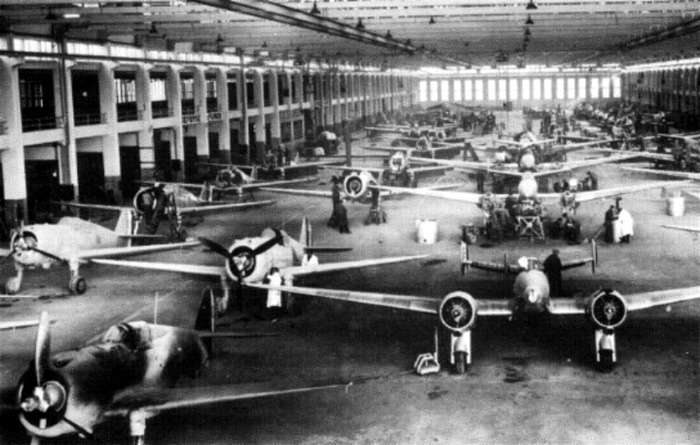
Ilmavoimat Potez 631’s undergoing modifications and Curtiss Hawks being repaired at the Veljekset Karhumäki factory at Tampere, May 1940.
ANF Les Mureaux 117 (France)
The ANF Les Mureaux 110 originated with a French air ministry requirement for an aircraft to replace the Breguet 19 in Armeé de l'Air service in the "R2" reconnaissance role. Two slightly different variants, the 110 and 111 were presented to the air force for evaluation, and were soon ordered into production. The first mass-production version was the 113 in 1933, of which 49 examples were purchased. This was supplanted in produ ction by the 115 in 1935 and the 117 later than year. Both these series were given light bombing capability as well. By the outbreak of World War II, the ANF Les Mureaux 117 equipped nine Groupes Aériens d'Observation.
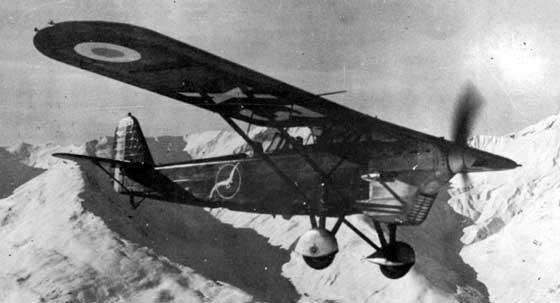
The ANF Les Mureaux 117 had a Crew of 2 (Pilot and Observer) and was powered by a single 634-kW (850-hp) Hispano-Suiza 12Yers piston engine. Maximum speed was 210mph, range was 620 miles and the service ceiling was 32,800 feet. Defensive armament consisted of 1 × 20 mm Hispano-Suiza HS.9 cannon firing through propeller hub, 2 × fixed, forward firing 7.5 mm MAC 34 machine guns and 2 × flexible 7.5 mm MAC 34 machine guns for observer. Bombload consisted of 200 kg (440 lb) of bombs. The major difference between the 117 and the earlier 115 was that the 117 had improved aerodynamics.
In early 1938, the Ilmavoimat / Maavoimat test team evaluated the ANF Les Mureaux 117. It was assessed as a rugged but somewhat dated aircraft similar to the Fokker C.X the Ilmavoimat already had in service and without any real multi-role or STOL capability.
Bloch MB.131 (France)
The Bloch MB.130 and its derivatives were a series of French monoplane reconnaissance bombers developed during the 1930s. The MB.130 was developed in response to the August 1933 French Aviation Ministry request for a reconnaissance and tactical bomber. It was an all-metal, twin-engine, low-wing monoplane with retractable landing gear, and armed with three flexible machine guns, one each in the nose, dorsal turret, and ventral gondola. It first flew on 29 June 1934, and despite very ordinary performance, soon entered production, 40 machines being ordered in October 1935. An improved version, the MB.131 was first flown on 16 August 1936, but still needed more work to overcome its deficiencies. The radically revised second prototype which flew on 5 May 1937 eventually formed the basis for series production, with aircraft being manufactured by SNCASO, the nationalised company that had absorbed Bloch and Blériot. Total production (including prototypes) was 143. As with the Potez 540, given the role that the aircraft was expected to fill, the evaluation was cursory and simply confirmed that the aircraft was completely unsuited to the intended role and should not be considered further.
Entering service in June 1938, the MB.131 went on to equip seven reconnaissance Groupes, six in metropolitan France and one in North Africa. Upon the outbreak of the war, the metropolitan Groupes suffered heavy losses in attempts at daylight reconnaissance of Germany's western borders. They were subsequently restricted to flying night missions, though they still suffered heavy losses even then. By May 1940, all metropolitan units had been converted to Potez 63.11 aircraft, with only the African groupe retaining them for front-line duty.
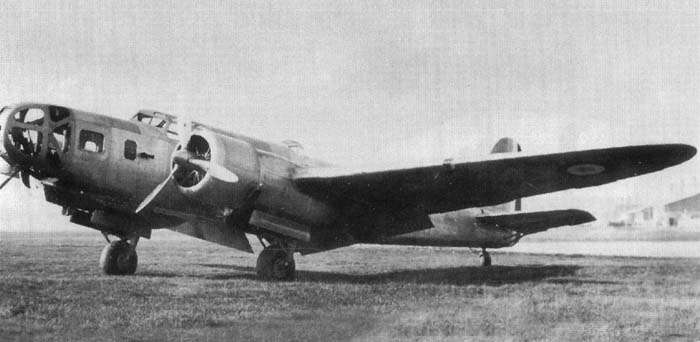
The Bloch MB.131 had a Crew of 4, was powered by 2 × Gnome-Rhône 14N-10/11 14-cylinder air-cooled radial engines of 708 kW (950 hp) each and had a maximum speed of 217 mph with a range of 808 miles and a service ceiling of 23,785 feet. Defensive armament consisted of 3 × 7.5 mm (.295 in) MAC 1934 machine guns in flexible mounts in the nose, dorsal turret, and ventral gondola. Bombload consisted of 4 × 200 kg (440 lb) or 6 × 100 kg (220 lb) or 8 × 50 kg (110 lb) or 64 × 10 kg (22 lb) bombs.
OTL Note: After the Battle of France, the planes left in Vichy possession were relegated to target towing duty. 21 planes were reported captured by the Luftwaffe in inoperable condition, but photographic evidence suggests at least a few flew for the Nazis.
Next Post ...... the decision!
